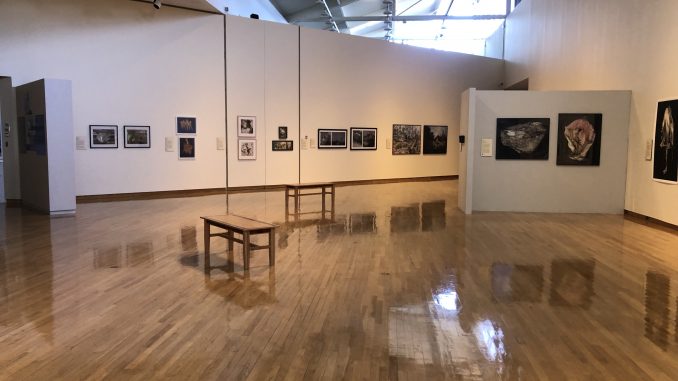
By Sarah Snyder, Marketing and Communications Intern
PhotOH: Photographers in the Heartland is a Miami University Art Museum exhibition dedicated to showcasing work created throughout Ohio communities. Curated by William Messer and Jason E. Shaiman, the exhibition exposes the Miami University community and the broader FotoFocus audience to a geographically diverse survey of photographers working in Ohio. PhotOH: Photographers in the Heartland is free and open to the public, and will be on display at MUAM for the entirety of the 2022 Fall semester.
Eleanor Moseman, a photographer, visual conservationist, and storyteller, has dedicated much of her work to creating photographic historical records of cultures such as Tibetan Buddhists and the Muslim Uyghurs of Xingjiang. Her two photographs in the museum are both of Jamyang Tsomo, a woman she met and grew close to in Tibet. Moseman states “This project is an ongoing story of a woman that exemplifies dedication and bravery. Yet, it’s also about poverty and an alternate narrative to the common mythologized visions of Tibet.” Learn more about Jamyan Tsomo’s story and Eleanor Moseman’s work at Moseman’s website here.
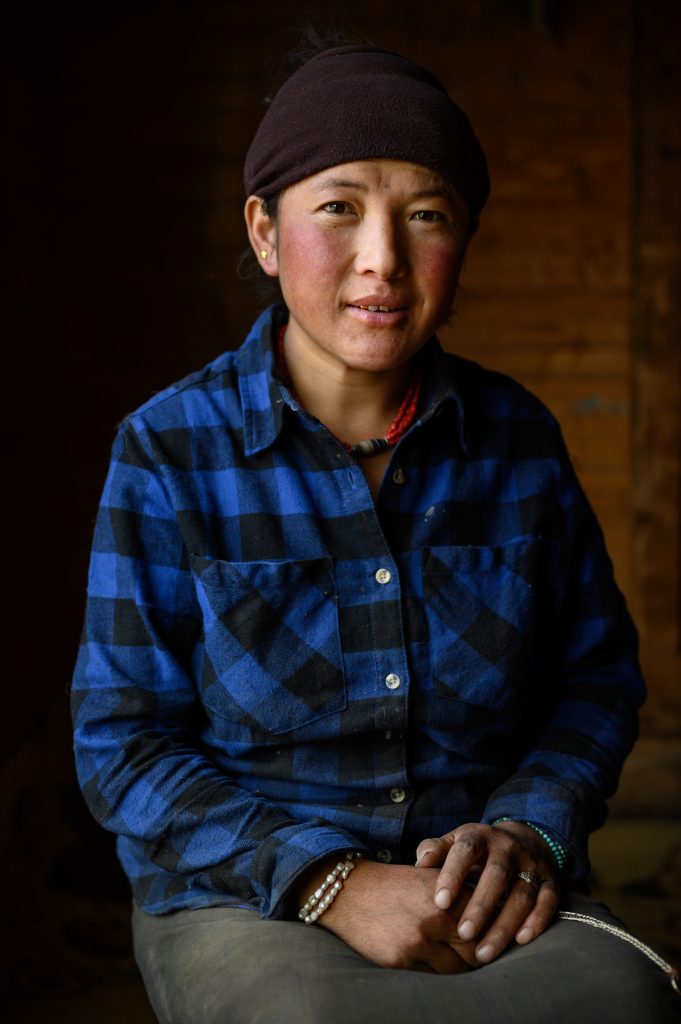
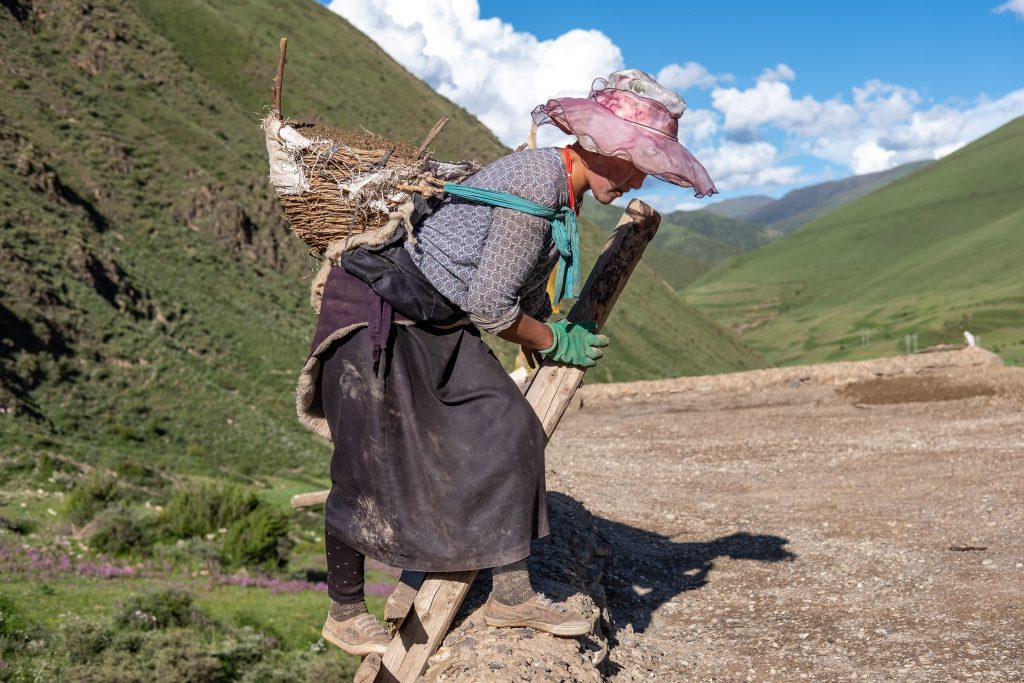
Eleanor Moseman
Jared Thorne’s artwork centers around identity in relation to class and race, especially in his two artworks displayed at MUAM. Both photographs are part of a larger project titled 26 Planned Parenthoods, where he photographed every Planned Parenthood facility in Ohio. This project has led him to exploring concepts of power and desire, along with subjectivity and identity, through landscape photography. Explore Thorne’s 26 Planned Parenthoods project and other works here.
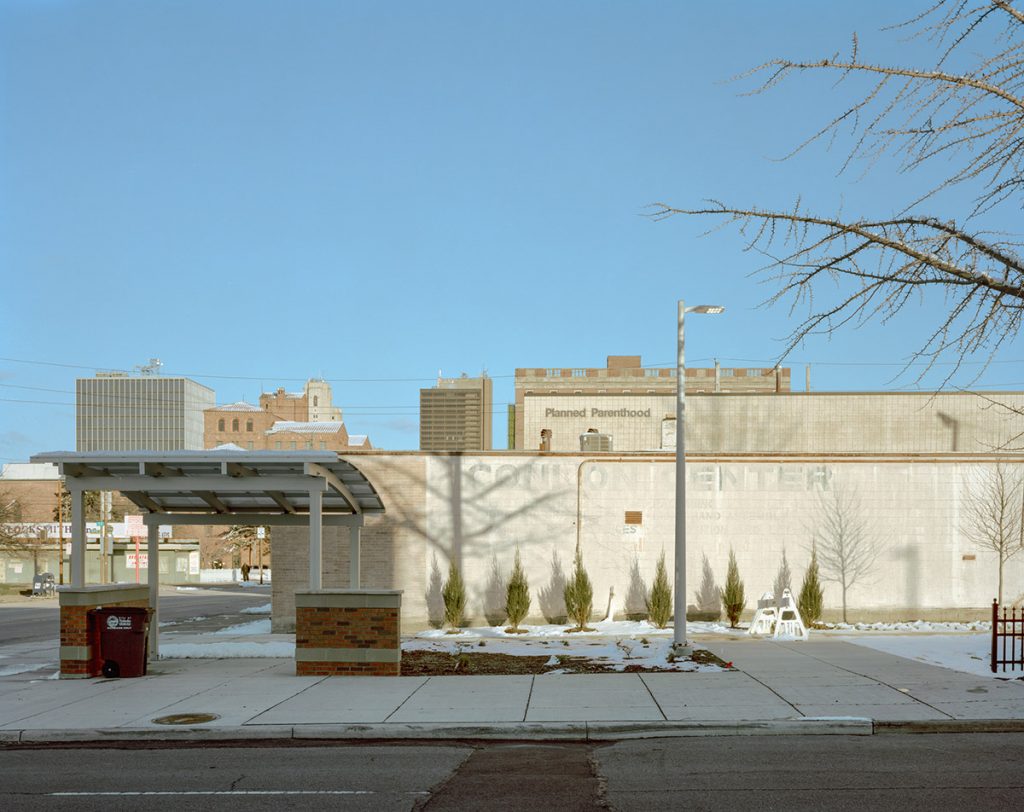
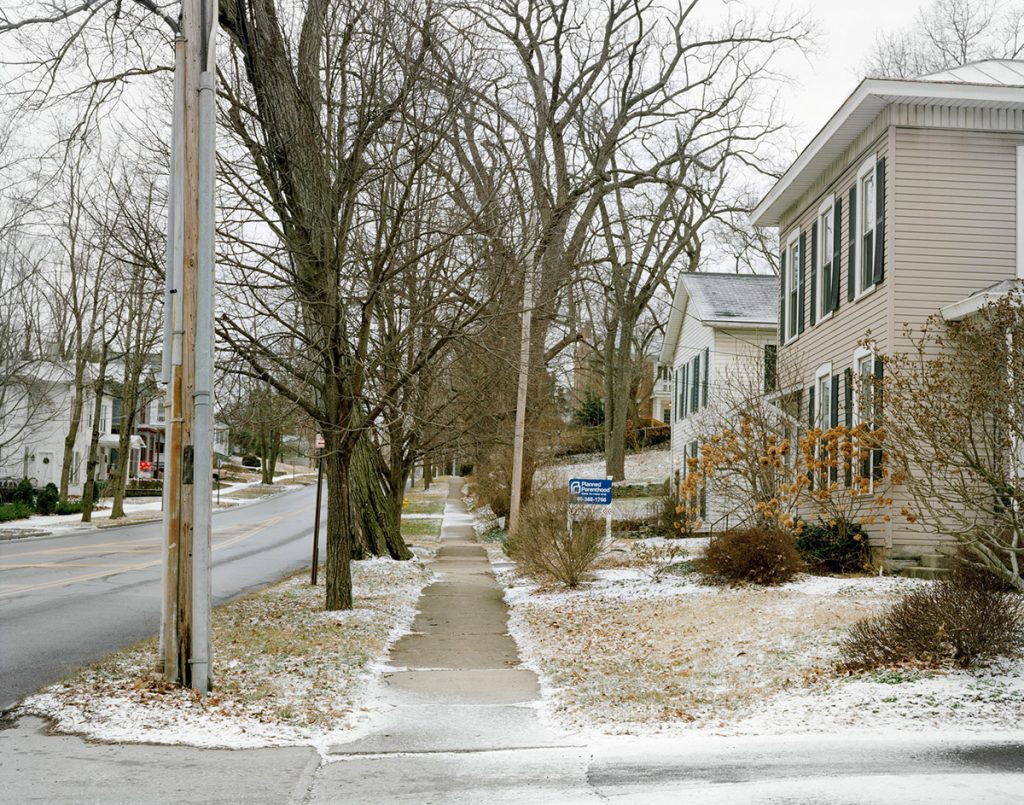
Lynn Whitney is a northwest Ohio photographer exploring cultural and environmental issues within the context of Lake Erie’s shoreline. Her photographs Family Picnic, Magee Marsh Beach, Oak Harbor, OH and Huron Boy, Huron, OH explore the culture of people along the Erie. “Perceived as resources to use, misuse or abuse, water and women are both mistakenly perceived as having an endless capacity to absorb and thrive,” says Whitney. She hopes that, by sharing the relationship between humanity and the Erie shoreline, viewers might take a closer look, just as she has. See more of Whitney’s work here.
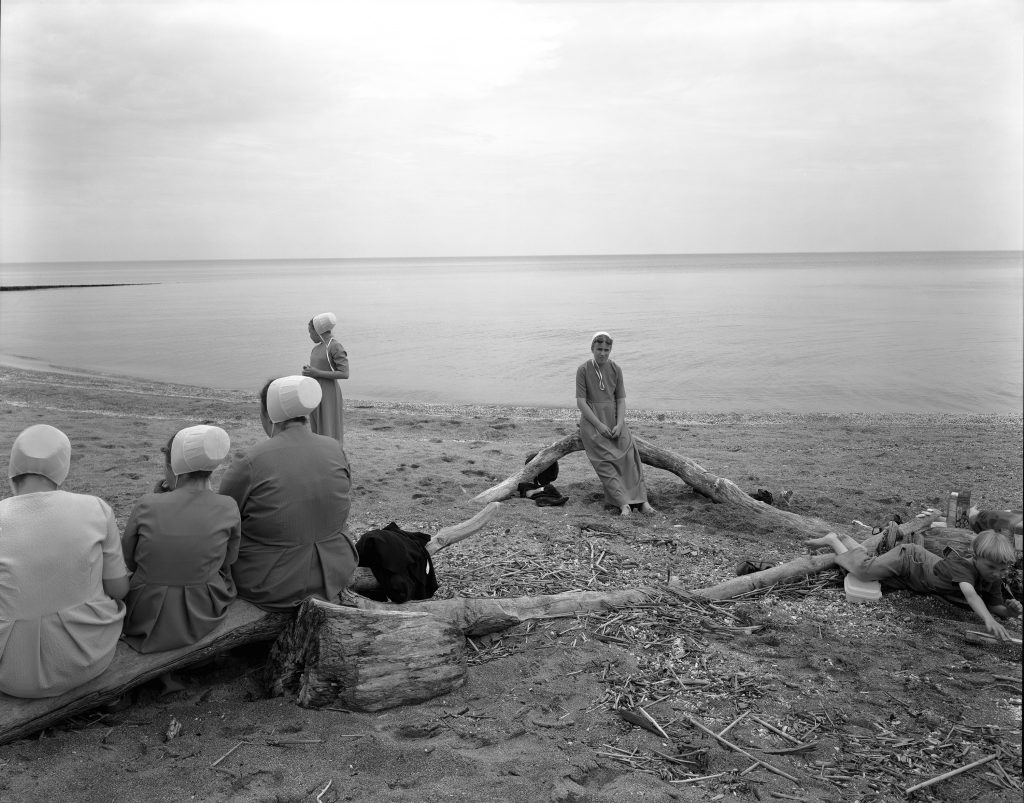
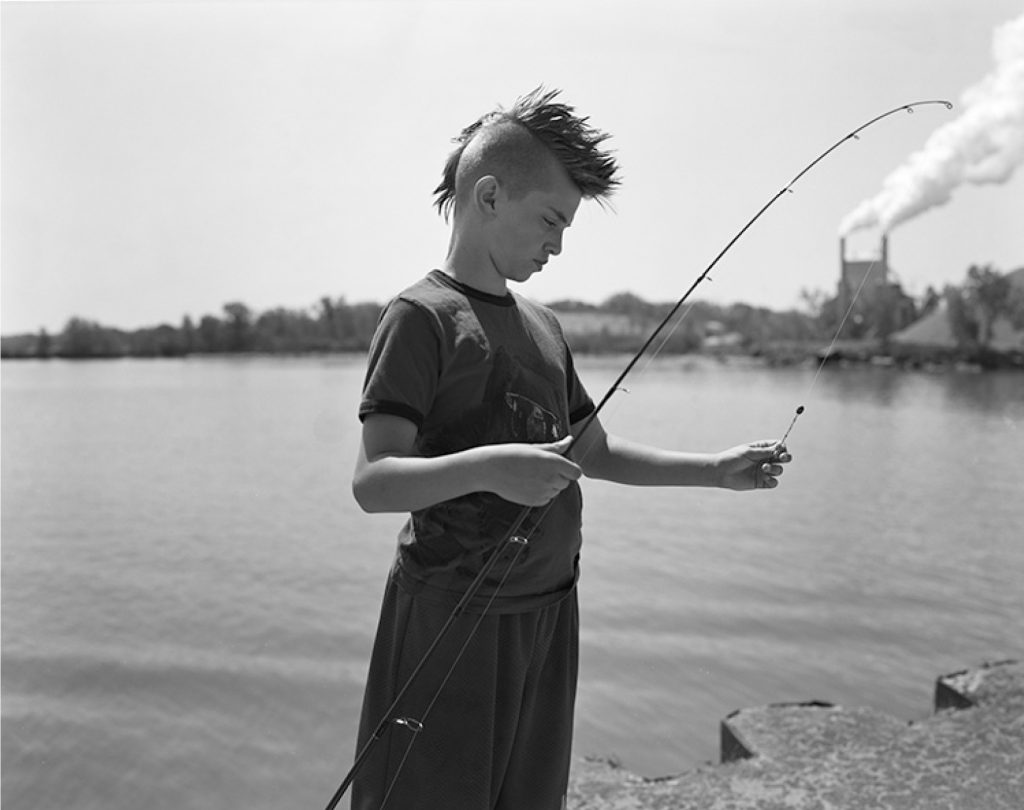
Deborah Orloff, Professor and Head of Photography at the University of Toledo, explores vernacular photography and lost memories with her photographs Torn Surface and Young Boy, which come from her work Elusive Memory. “My images allude to lost stories – especially due to forced migration, as was the case for my ancestors,” says Orloff, “and the universal experience of struggling to recall details of the past.” Explore Orloff’s work here.
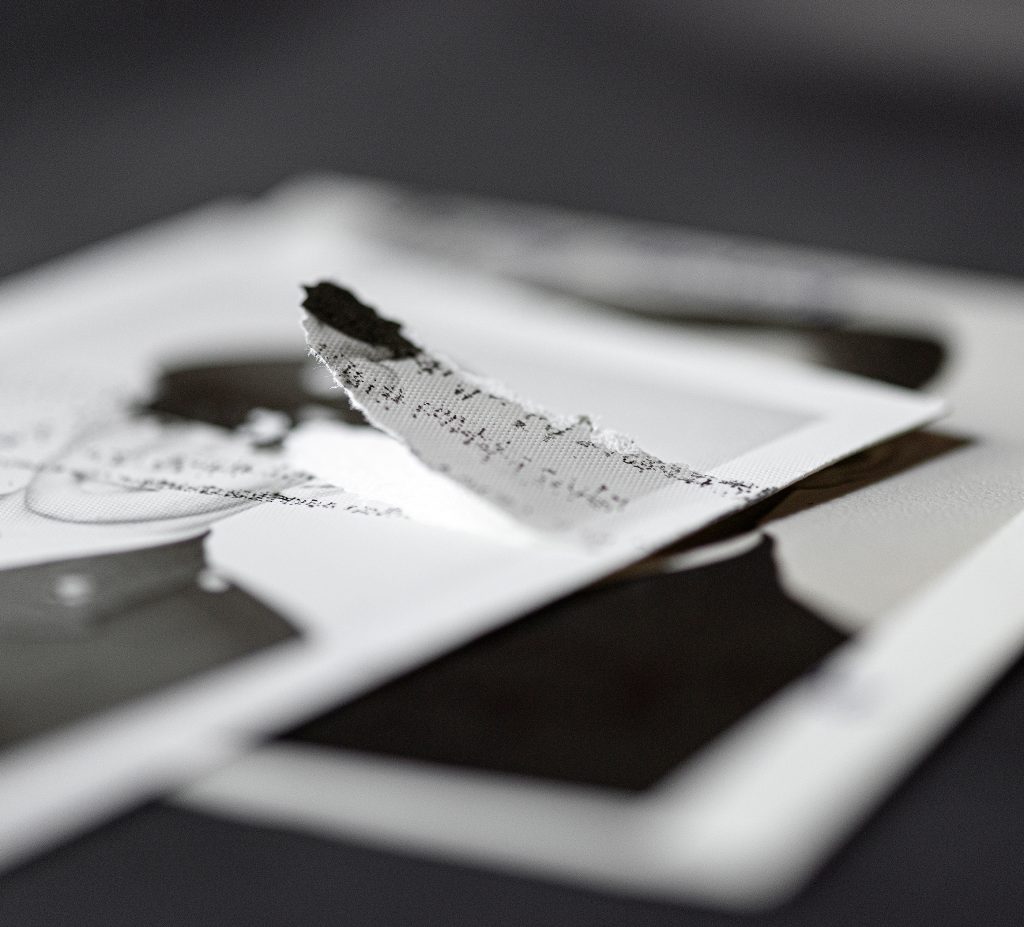
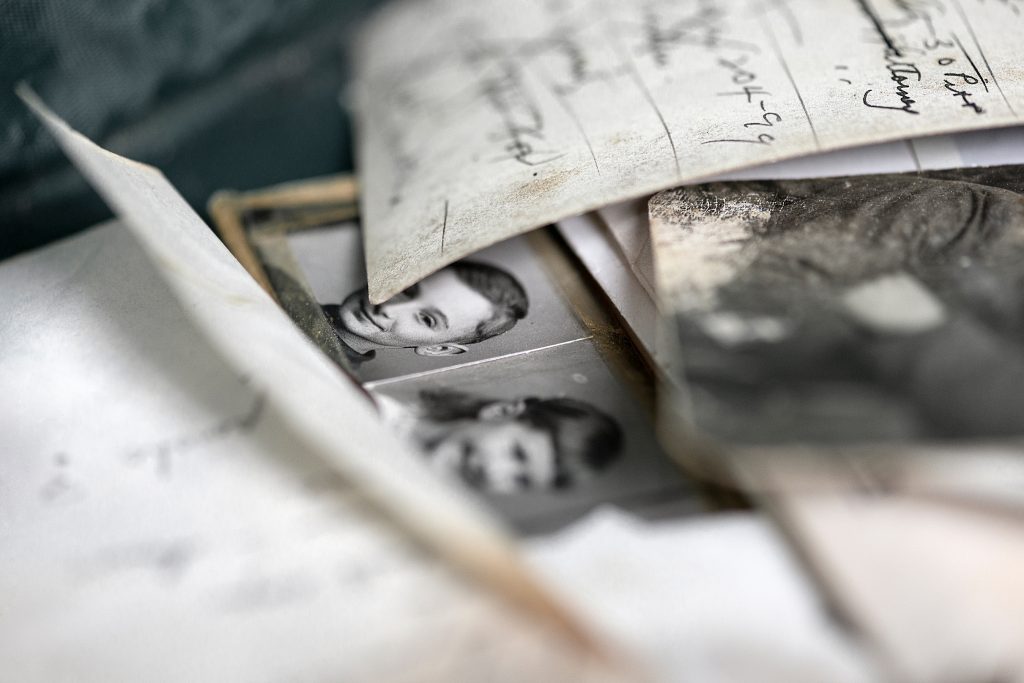
Glenna Jennings, an artist, educator, and community advocate in Ohio, directs her passion for travel and food justice to her ongoing series At Table, where she documents settings of communal meals, including kitchens, restaurants, and bars all around the world. Her works At Table #222 and At Table #98 take place in Prague and London, respectively. “Though At Table focuses on places of access and abundance,” explains Jennings, “the imagery often helps guide conversations around social equity to connect with my work as a socially-engaged artist and food justice activist.” She hopes to reveal more of the human condition converging in the communal space of the table. Learn more about At Table and Jennings’ work here.


Greg Martin, an artist and designer exploring pre-film photography, created Looking Around Inside and All I Want is to Breathe through the collodion wet-plate process. By exploring portraiture as a social mirror, he shares with viewers his imagination. “Collected, carried and viewed at will, tintypes became a method to have a physical connection to loved ones near and far,” Martin says, “and to imagine the lives of strangers, by looking into their faces.” Look into Martin’s work more here.
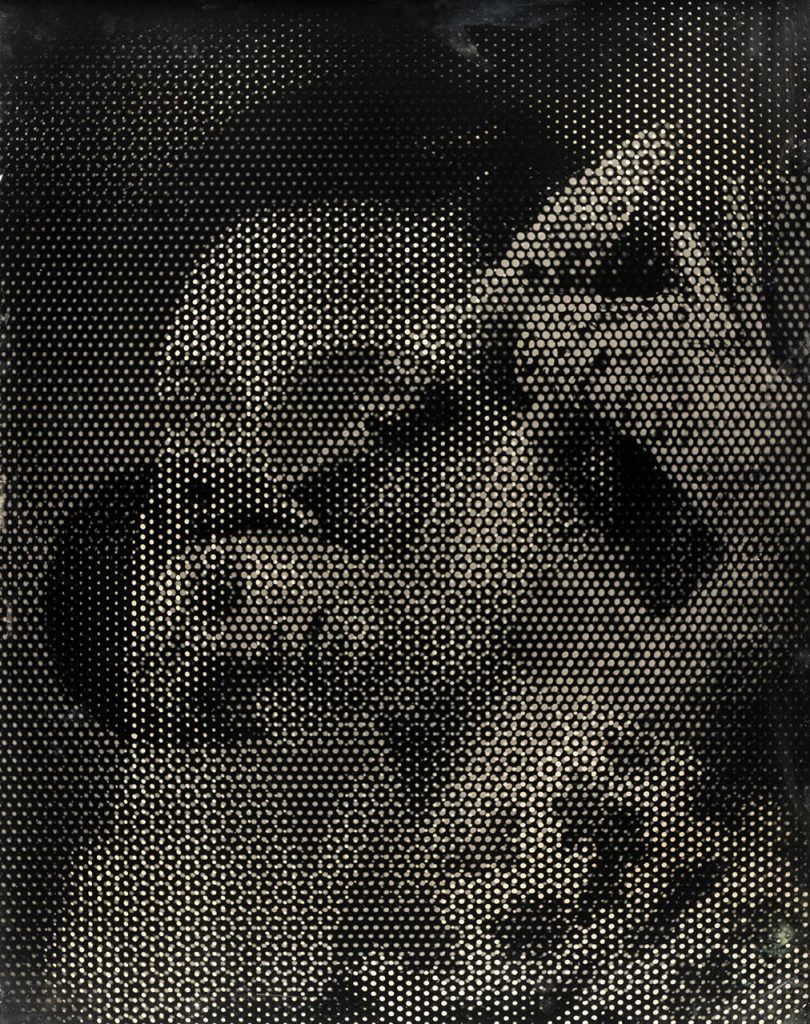
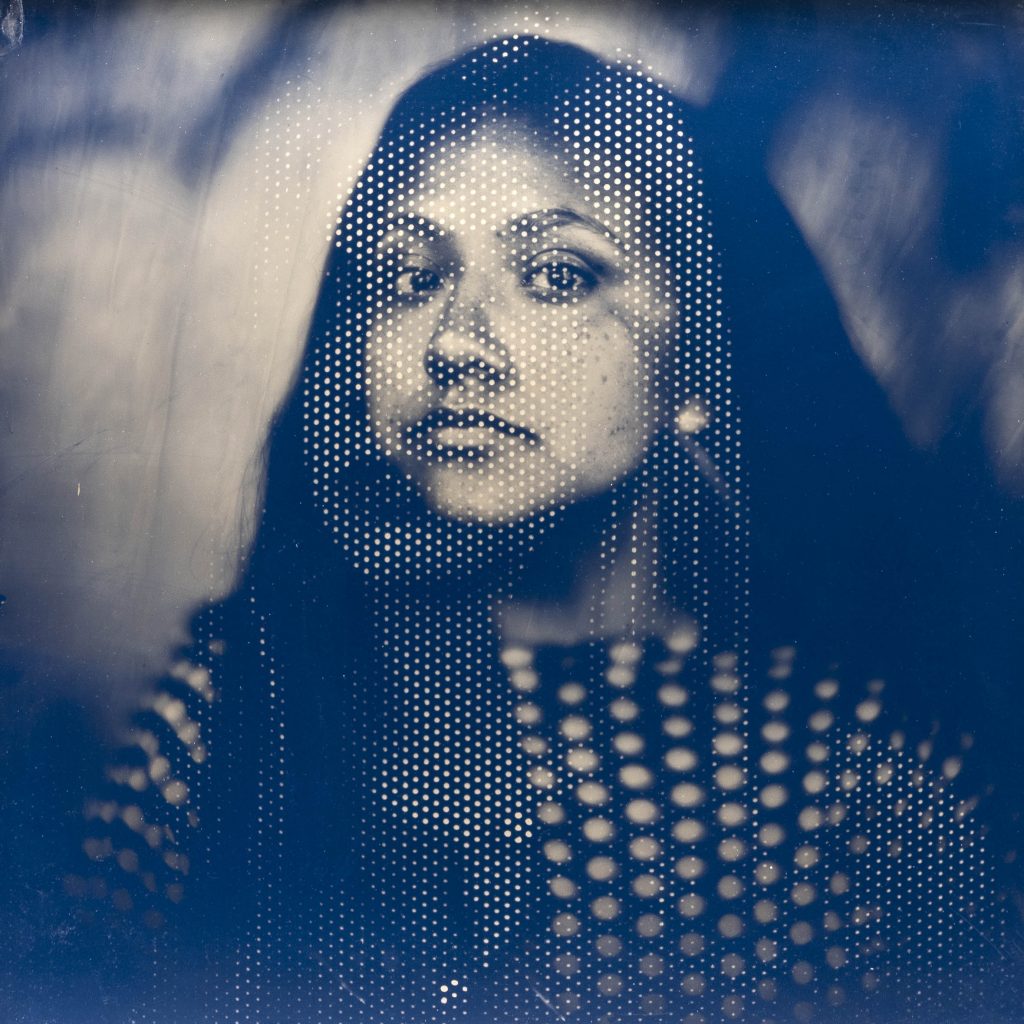
Cincinnati native Michael Wilson has been creating art for decades, and his work in PhotOH uses the tintype (ferrotype) process to create rich and rewarding photos. My Hands and Pears, both created with the tintype process, show a “richness and jewel-like quality,” says Wilson. Explore his artwork here.

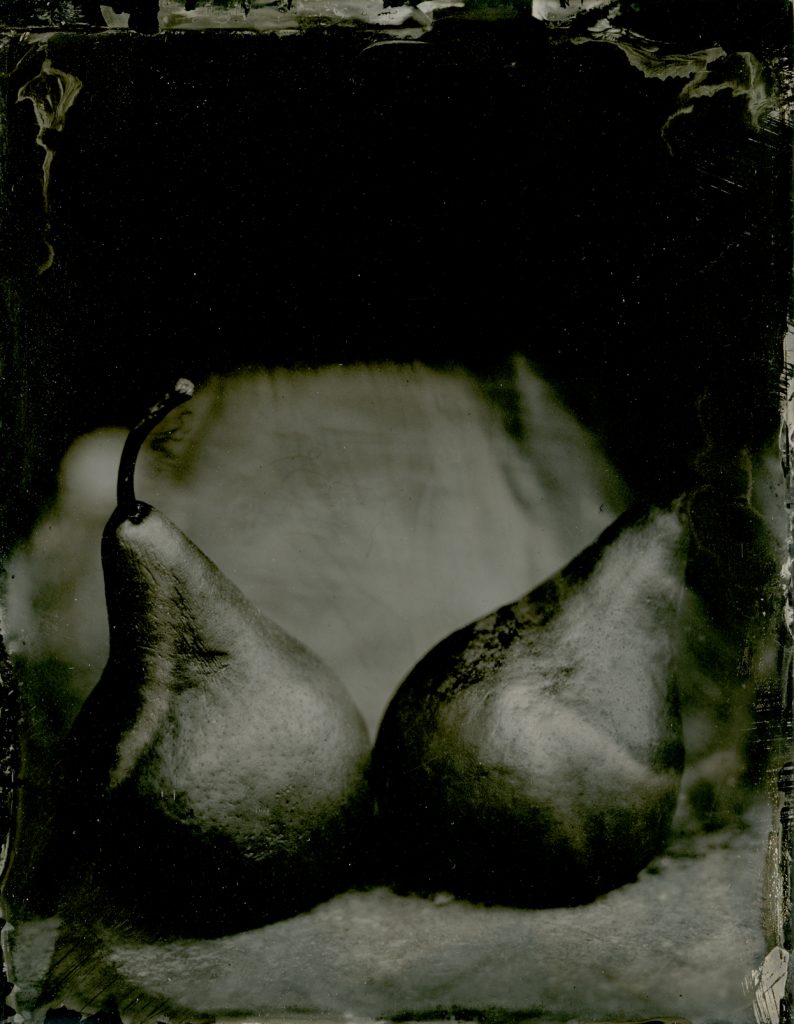
Ardine Nelson, Professor Emerita at OSU, explores plant life cycle in her project Transitory States. “This process of discovering the visual beauty of the aging flower applies to all stages we humans pass through as we age,” explains Nelson. By capturing flowers in their faded, late stages of life, long after the bright blooms of color, she offers the viewer an opportunity to consider the cycle of life, not only for flowers, but for all life cycles in our world. Explore Transitory States and Nelson’s other work here.
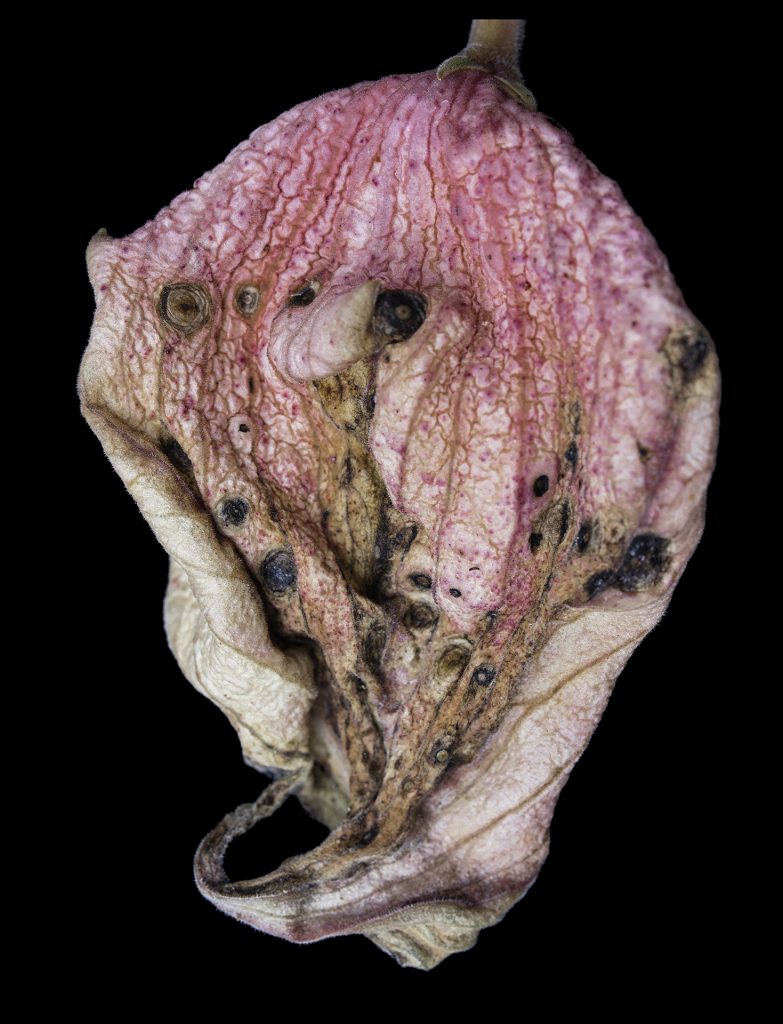
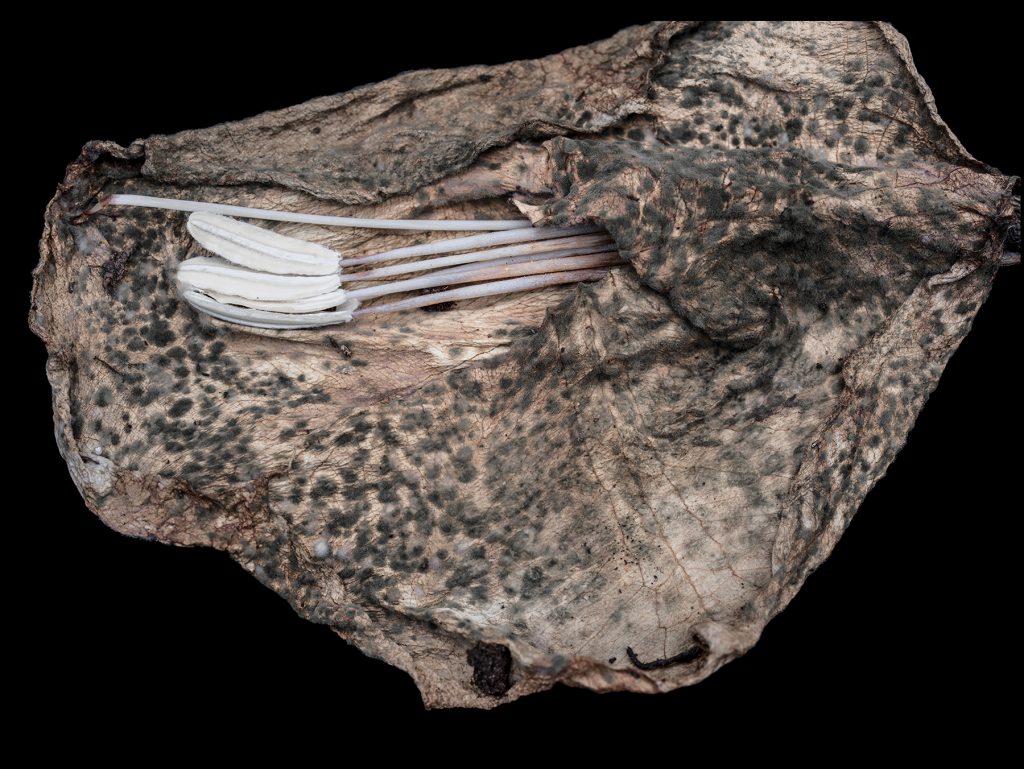
Currently working in Columbus, Fredrik Marsh uses his experience in American landscape photography to hone in on urban environments. His creative process often includes street work, along with an open eye for spontaneity and letting his camera roam the urban area. His photographs Golden Redfish and European Starling, however, are an exploration outside of his usual style with the help of the OSU Bio Museum’s collections. Marsh’s scans of the specimens are larger-than-life, and can be viewed in full at MUAM. Learn more about Marsh and his work here.
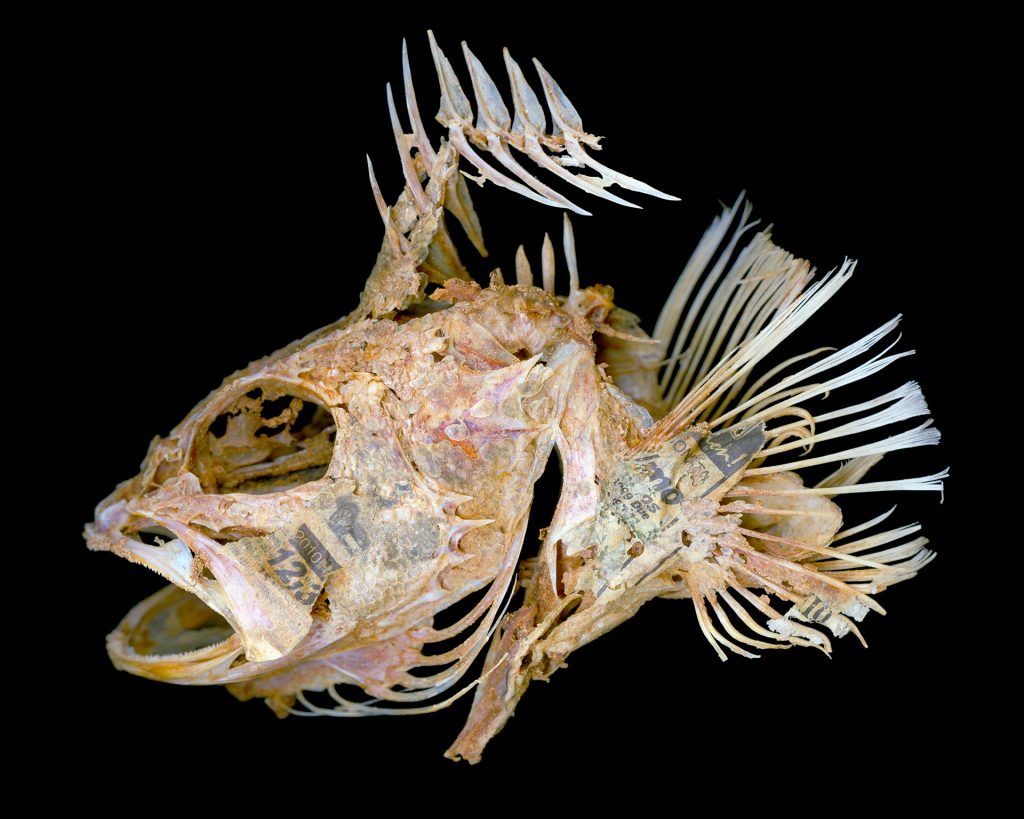
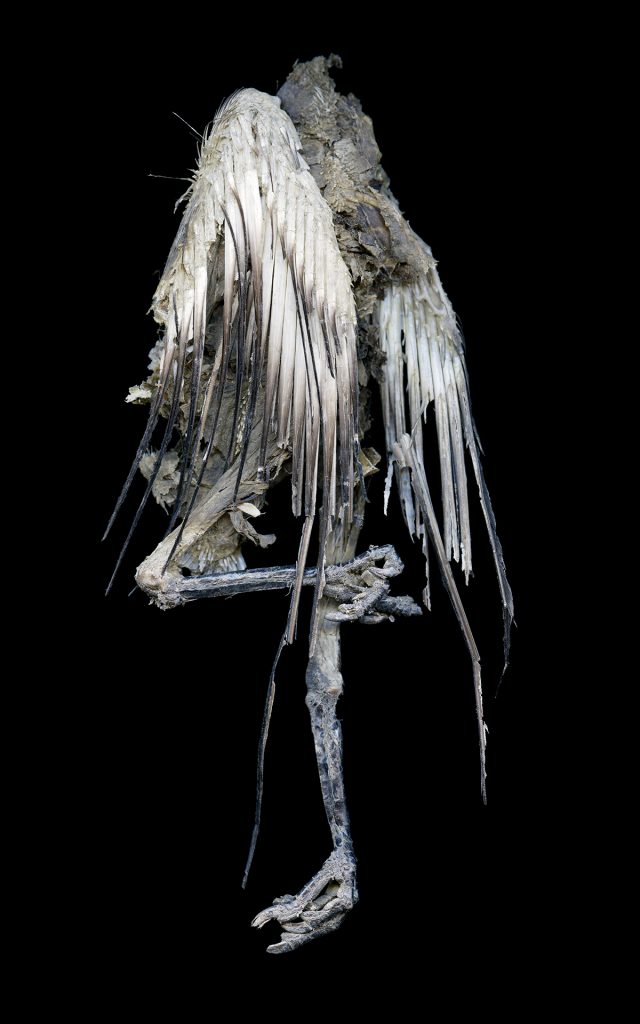
Gary Beeber, award-winning photographer and filmmaker, explores the passage of time and local places with Abandoned Jaguar and After the Season. His focus on incongruous subjects and quiet spaces lends itself to contemplation of his subjects. “The images I capture speak to me in a variety of ways,” says Beeber, “fulfilling an insatiable curiosity about the world and everything in it.” See his other works here.
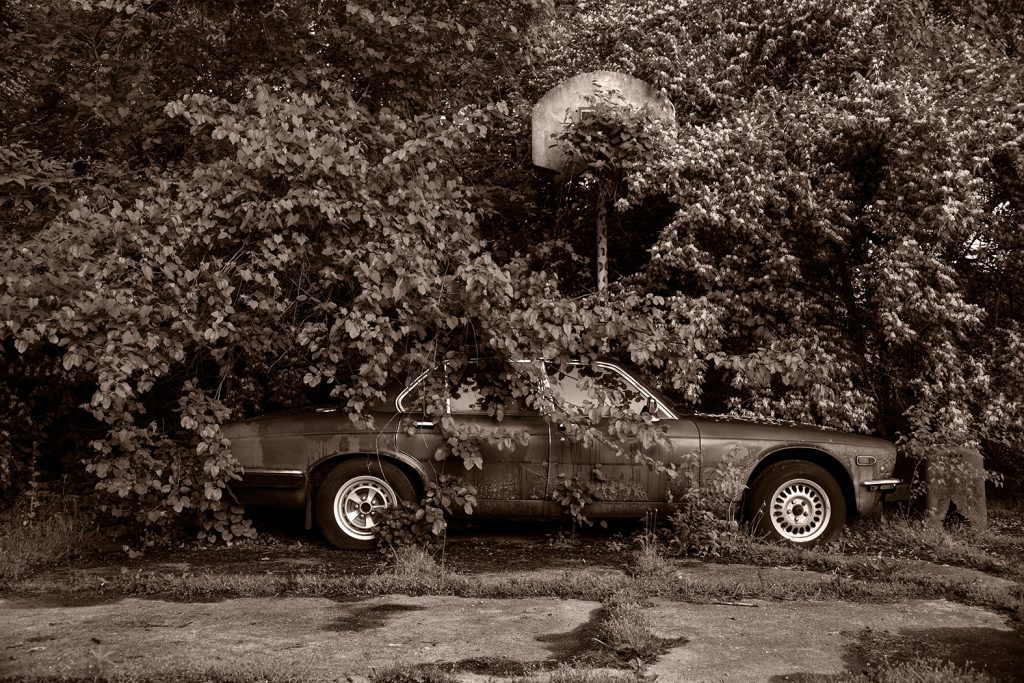
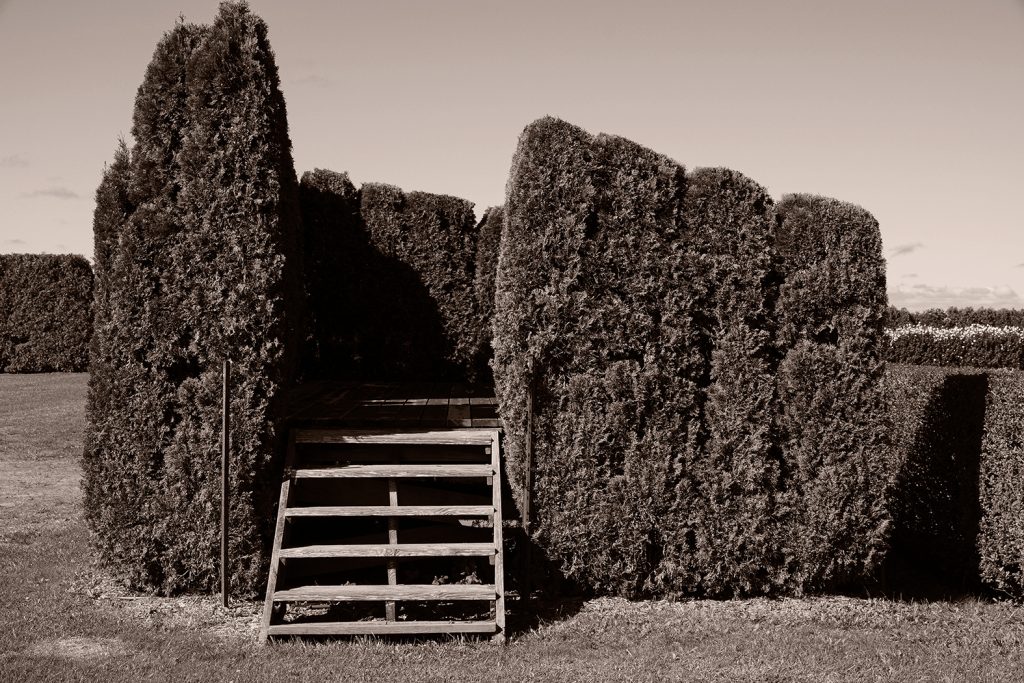
Andrew Borowiec is well-traveled, but spends much of his photographic time in the Rust Belt. Conemaugh, Johnstown, PA #1 and Conemaugh, Johnstown, PA #2 express a mere sliver of his four-decade-long exploration of the decline of the Rust Belt. Borowiec focuses his lens onto the landscape identity as a whole, from topography to history. He hopes to capture the “hopes and dreams of the people who live in that landscape, as they struggle to achieve some semblance of the American Dream under less than ideal circumstances.” See more of his exploration of the Rust Belt and other works here.
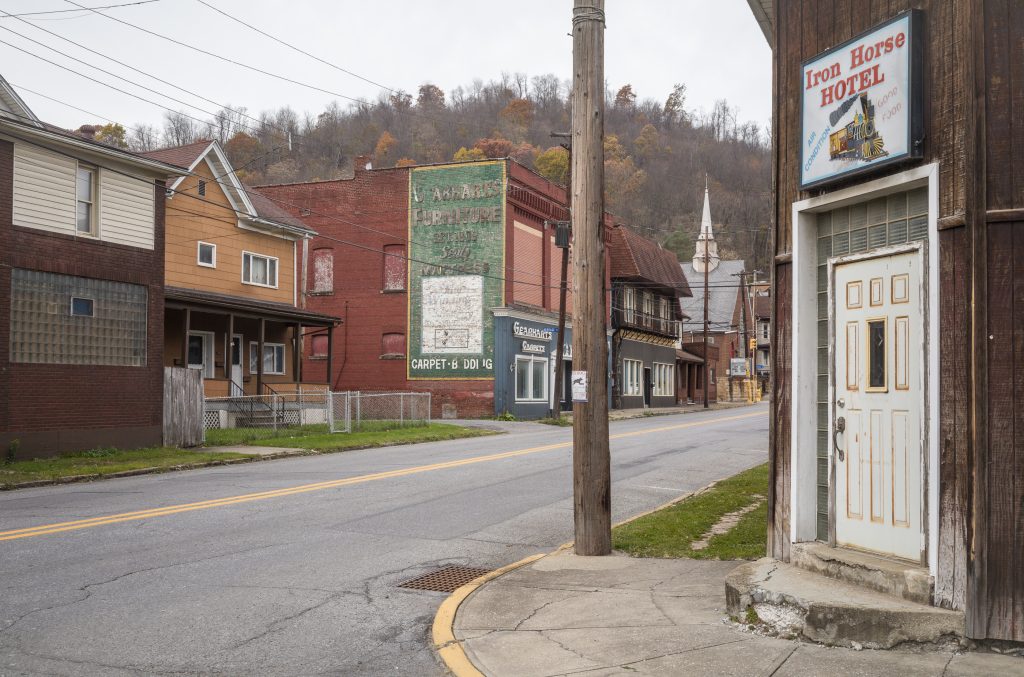
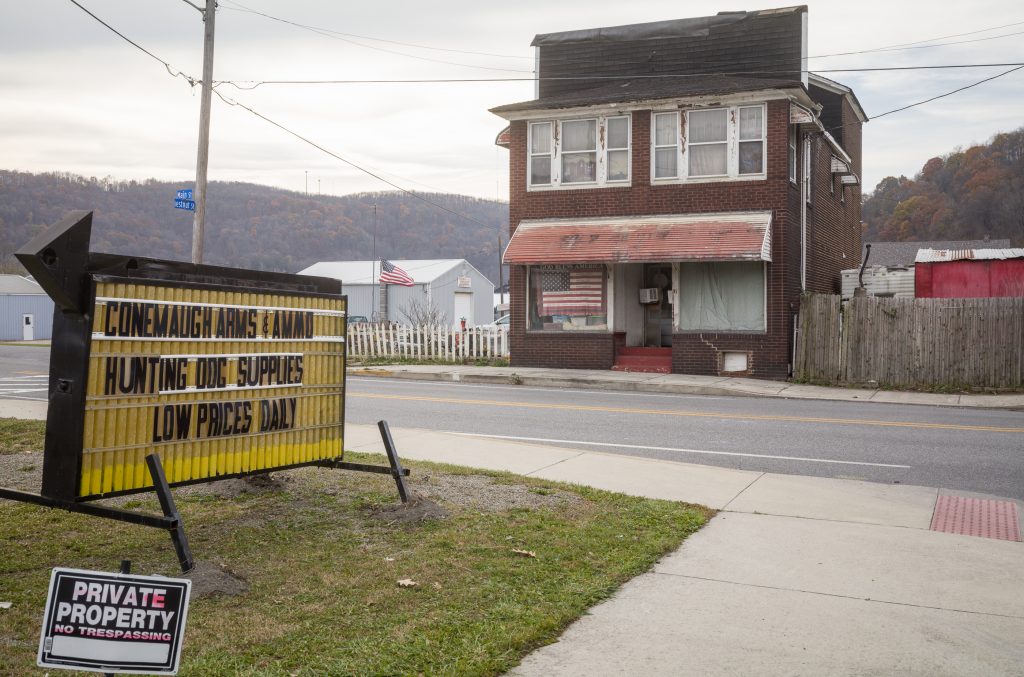
Duncan Snyder, photographer and teacher, focuses his photographic experience on the decisive instant of firing the shutter. He closes the gap between painting and photography with photographic residue, Abstract Expressionism and Color Field painting, and more in his photographs RGB2 Red and RGB2 Blue. “These pieces are an exploration of how I can manipulate the clarity of a single moment and extend it into an abstract world of color.” Learn more about Snyder’s creative process and his art here.
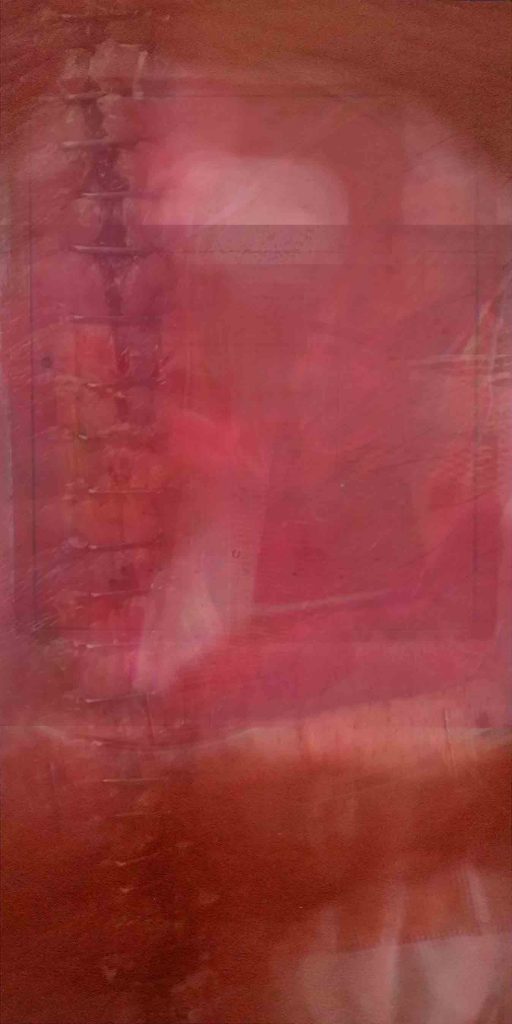
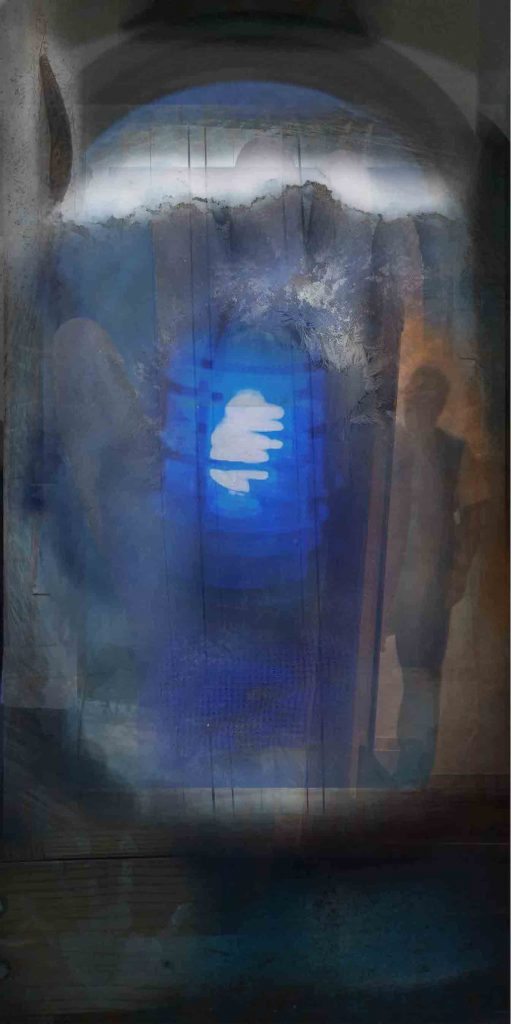
Sean Wilkinson, Professor Emeritus and Distinguished Service Professor from his time as faculty at the University of Dayton, explores how people view both the obvious and the mysterious with his project As Is. He challenges viewers to see the pictures themselves as the subject of attention. Much like Susan Sontag’s description of a “thing,” Wilkinson proposes “a picture of a thing is a picture; it is not the thing pictured.” Learn more about Wilkinson and his work, including As Is, here.
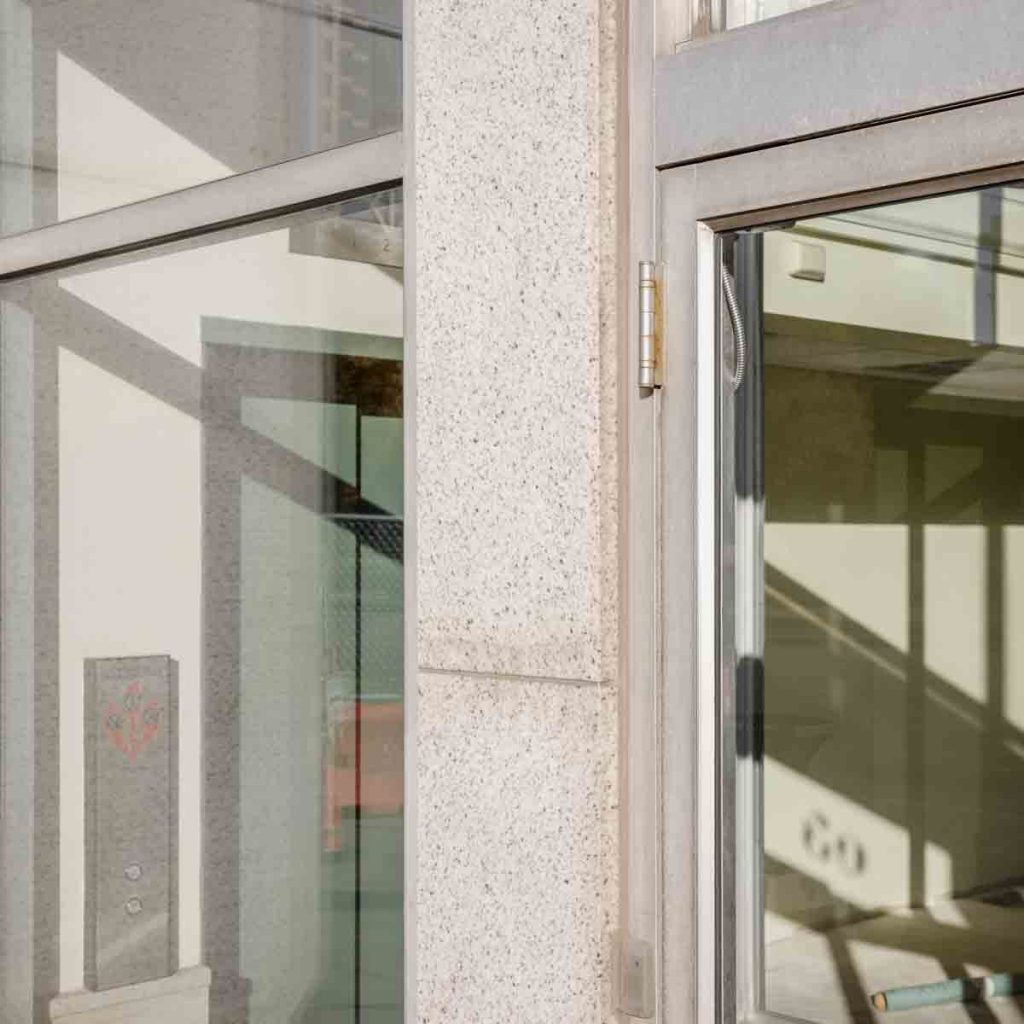
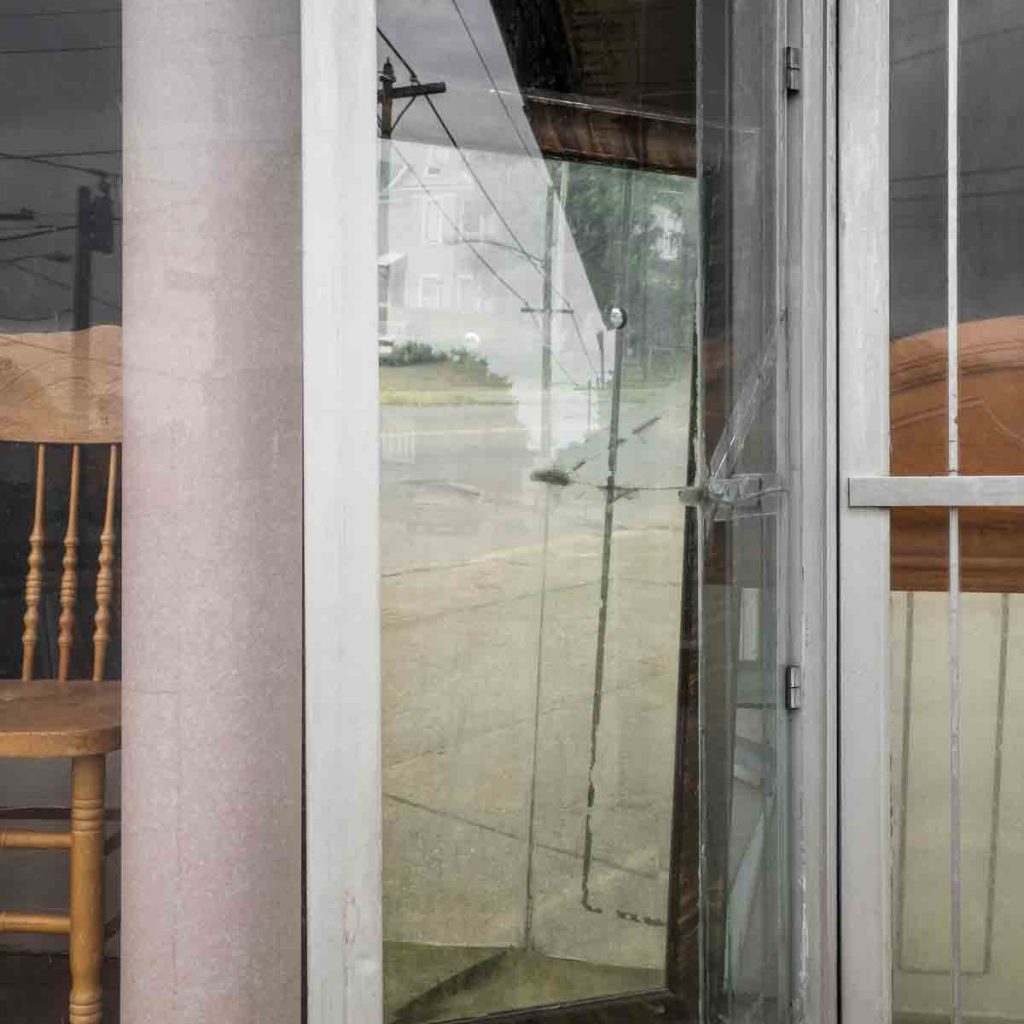
Tom Croce is a Miami University alum and self-taught freelance photographer of nature and landscapes. His work explores the Great Plains and its landscape structure. “Often there is no specific focal point,” he notes, “just a vast expanse of land and sky.” Although many consider the praries to be empty, Croce sees the “seemingly endless horizons and skies… life giving rains, and regenerative fire” of the plains with his photographs The Northern Great Plains and The Flint Hills. He brings attention to these endangered ecosystems falling prey to farmland and humanity as a whole. Explore Croce’s work here.

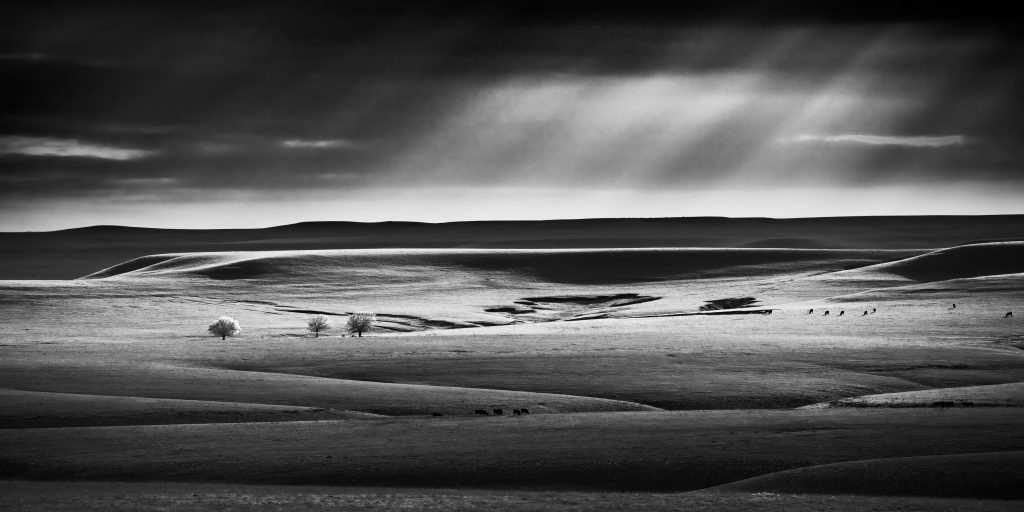
Raised in Cincinnati with a variety of life experiences, Casey LeClair focuses on street photography as the art of improvisation, especially in Half Mast and The Guest of Honor. His work spans multiple genres, and yet blends together as a cohesive unit of the human experience. LeClair explains, “Street photography can be portraiture, landscape photography, a documentary… abstract, conceptual, realistic, whimsical… or it could be all of the above – even in a single image.”
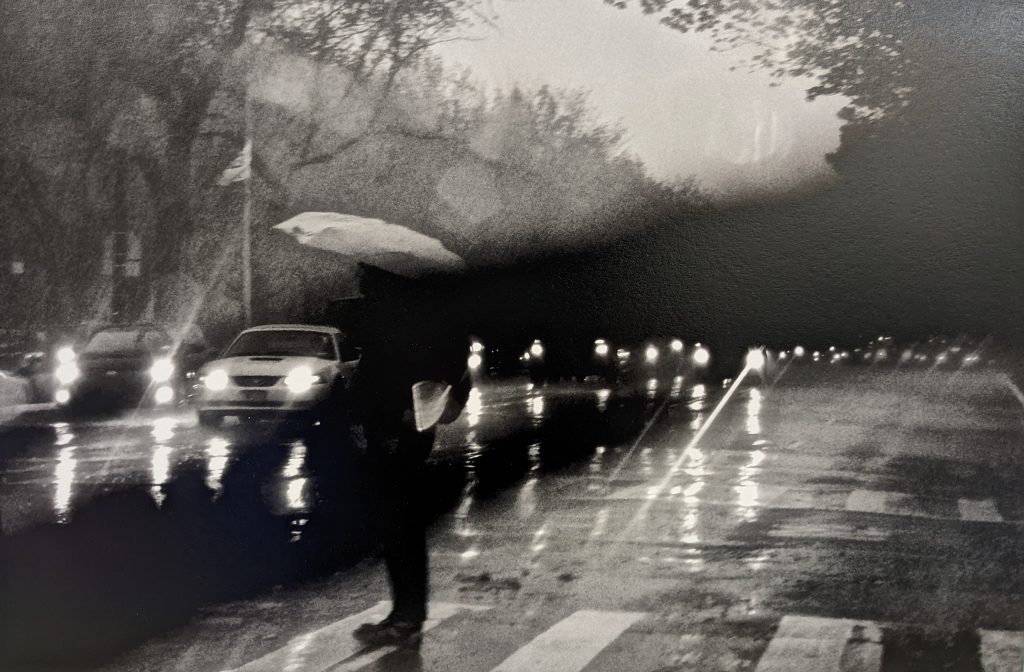
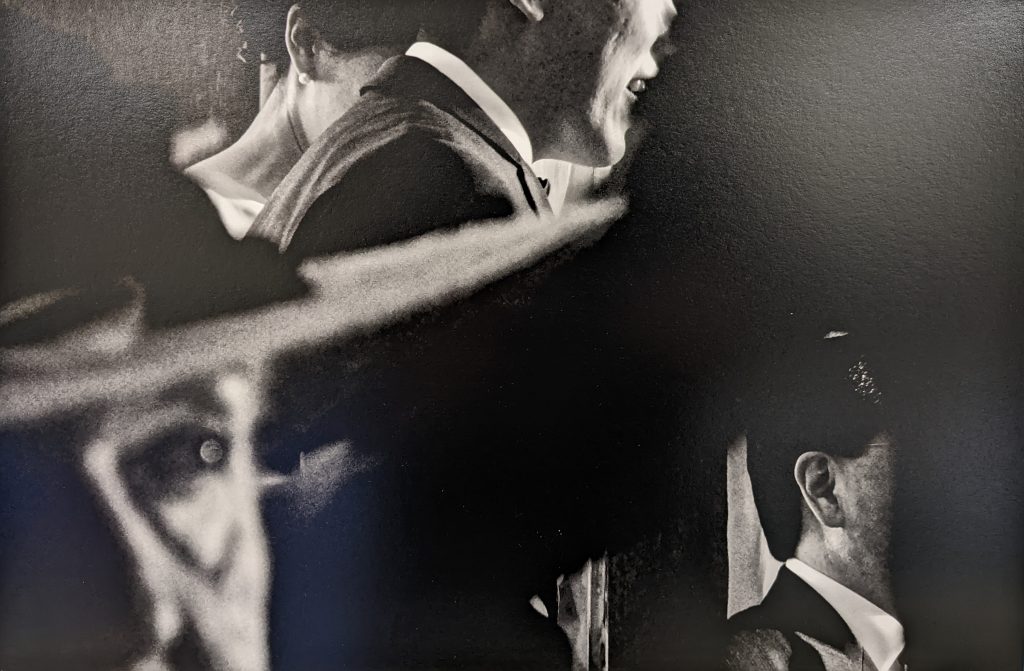
Based in Cleveland, Amber N. Ford’s project Mistaken Identity captures “the everyday items that have led to the deaths of people of color at the hands of law enforcement officers.” The work shows a hairbrush, candy bar, water guns, and a cell phone, all of which have been mistaken for weapons by U.S. law enforcement. Ford’s focus on race and identity gives her work a specific point of view that expresses the grief of lost lives at the hands of a mistaken item. Learn more about Ford’s work here.
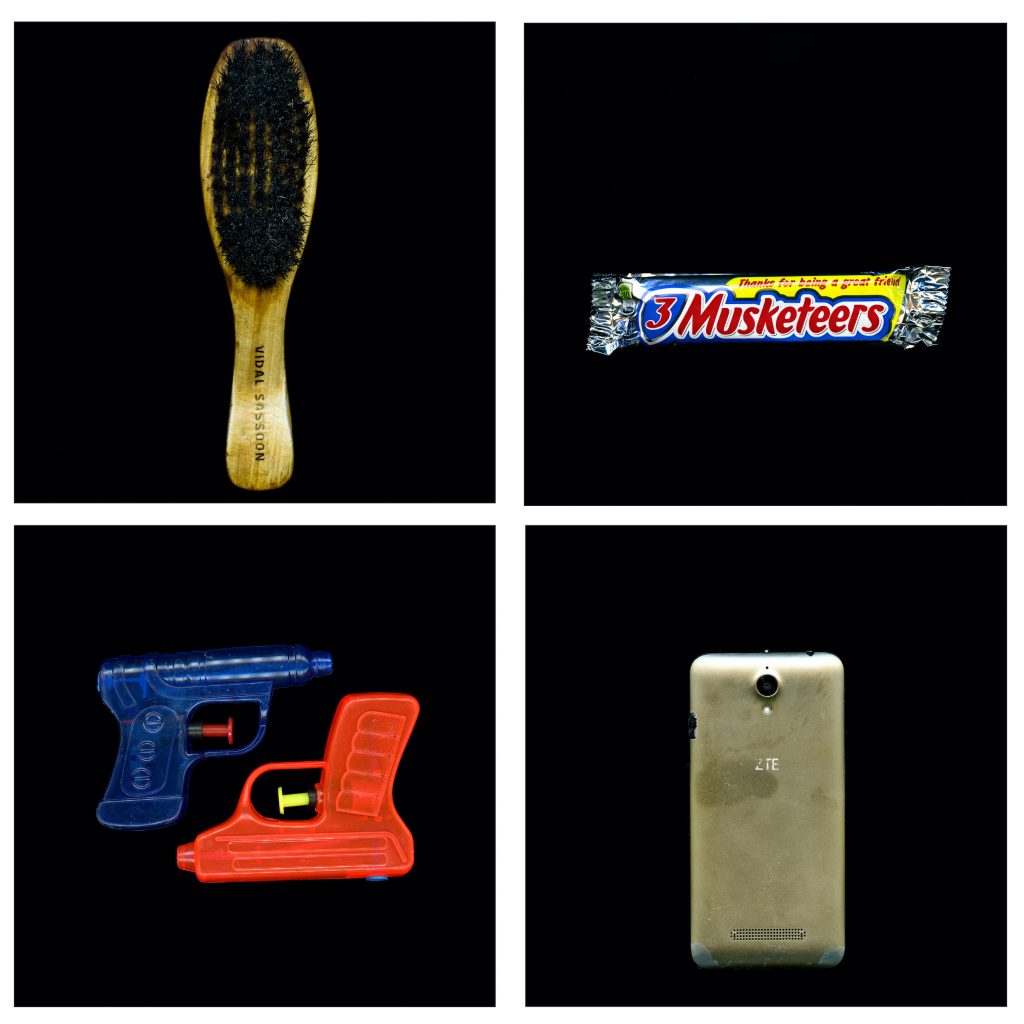
Donald Black, Jr. brings two photographs, Tangled and Balance Point, to PhotOH. Both come from a series of photographs titled A Day No One Will Remember that focuses on ordinary days in the lives of African-American children. He notes that “centering the Black child in this series is critical because of their premature loss of adolescence.” The series’ setting rests in Cleveland, a city with significant grief and trauma, to express the authenticity and personal nature. “There is no guarantee that these real and rare everyday experiences will happen again,” Black explains, “making it critical for these images to be captured.” Black will be present at the PhotOH: Behind the Lens reception and artist panel on Wednesday, October 12, at 5:00 pm. He and other photographers will discuss their work and impact with moderator and exhibition co-curator William Messer. Explore Black’s work and history here.
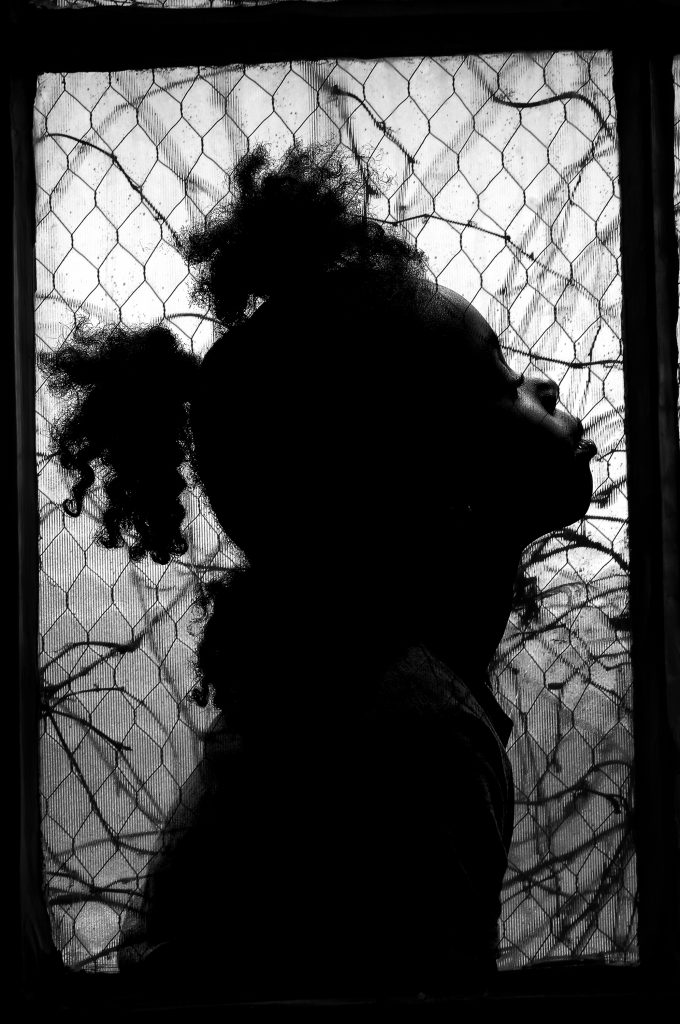
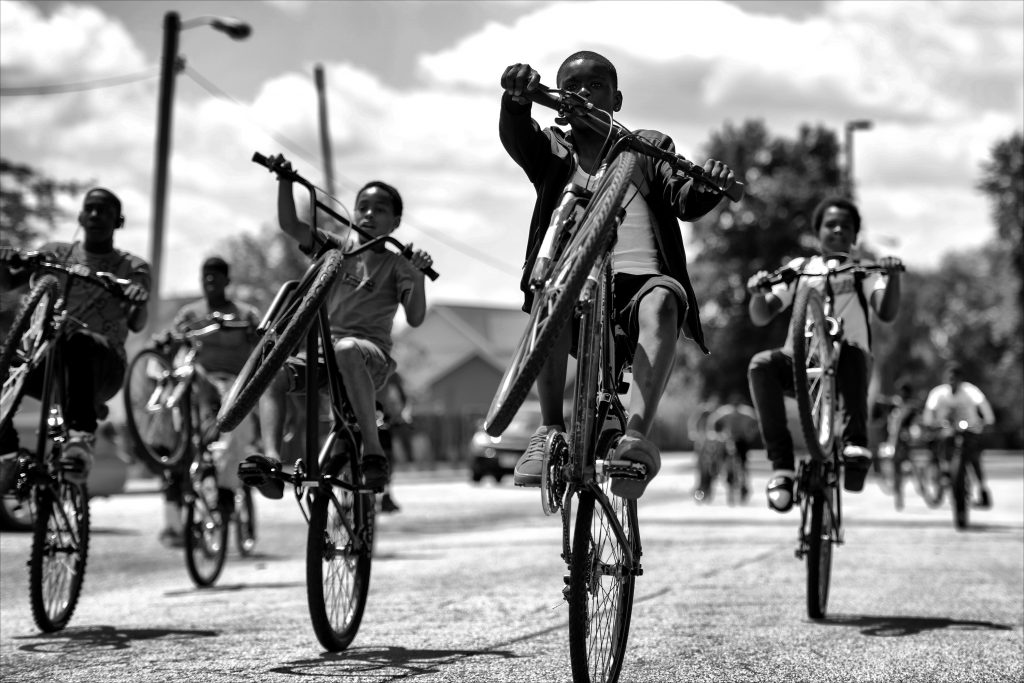
Bridget Murphy Milligan, an Ohio resident, centers her most recent series Wonder Tales: The Imprint of Child’s Play on the curiosity and imagination of children. Timber and Dream Flight, two photographs from the series, evoke emotions of fantasy and exploration from a childlike perspective. Milligan uses the photos to encourage viewers to reconnect with their inner child, and explains that recalling our childhood experiences “allow us an awareness of just how our youthful imaginations have influenced our lives and constructed our identities.” See more from Milligan here.
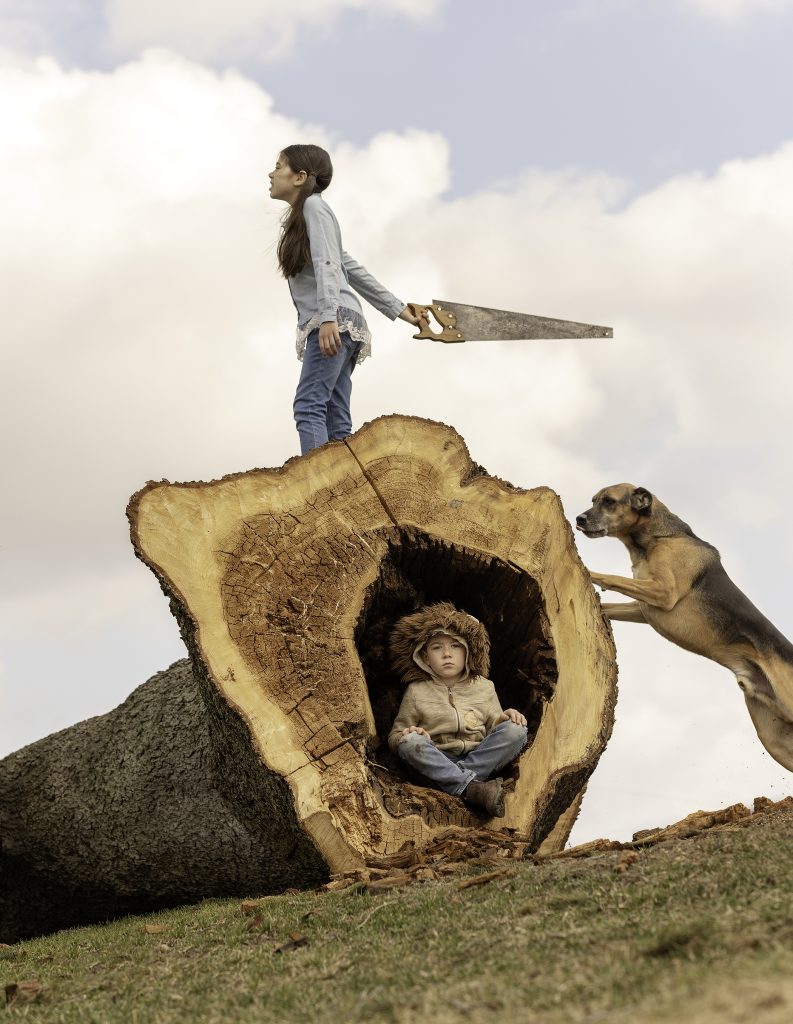
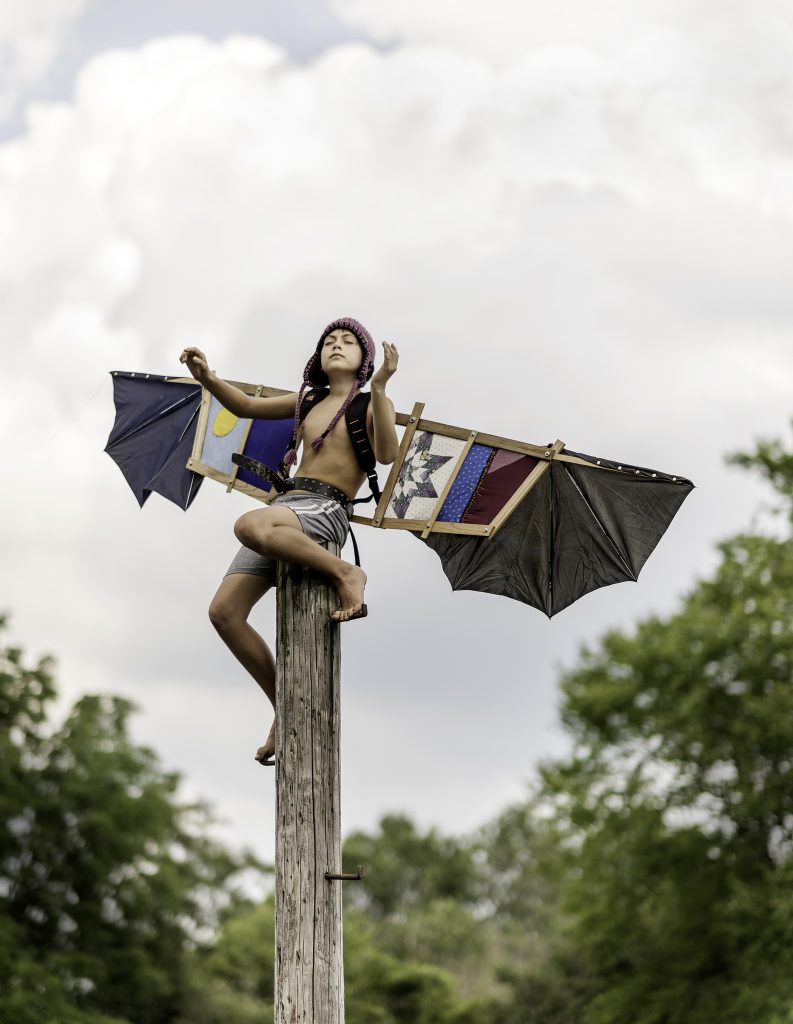
Bruce Checefsky’s unique photographic style in Red Zinnia and White Dahlia were created with a highly technical process involving a vertical flatbed scanner as a medium format field camera. By doing this, Checefsky can create glitches in the photographs and emphasize the colorful flowers, full of texture and sharp edges. “Beauty is the single most dominant criterion for my pictures,” states Checefsky. Checefsky will be present at the PhotOH: Behind the Lens reception and artist panel on Wednesday, October 12, at 5:00 pm. He and other photographers will discuss their work and impact with moderator and exhibition co-curator William Messer.
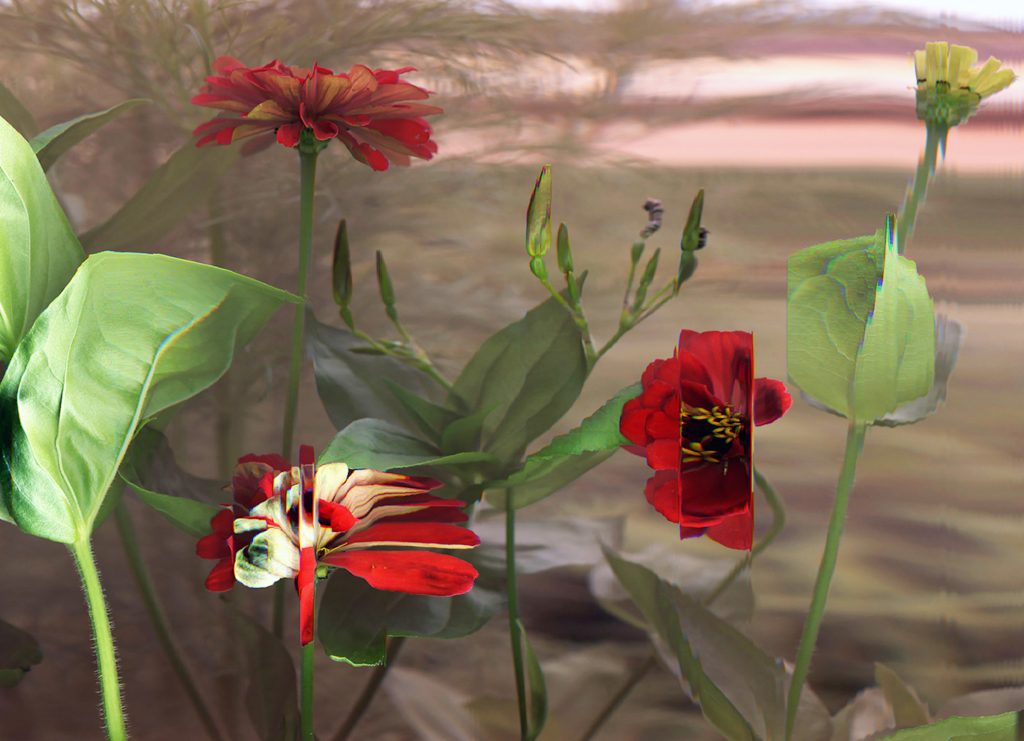
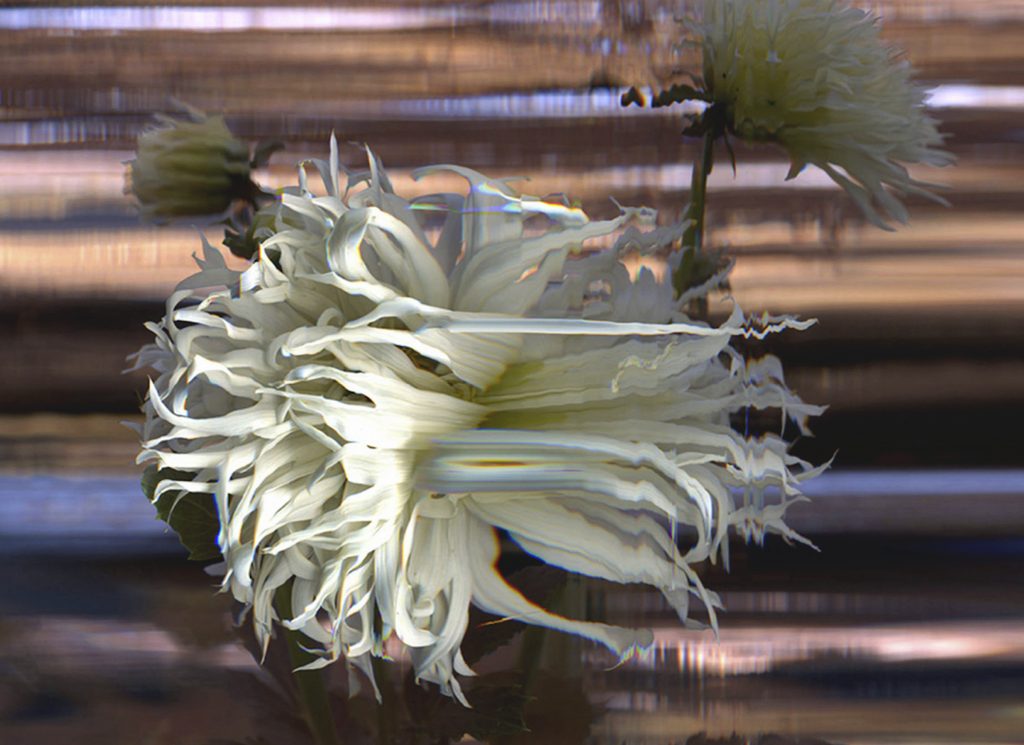
Based in Cleveland with a partnership lasting over 20 years, Lori Nix and Kathleen Gerber create and photograph model environments that are small in size, yet mighty in detail, color, and meaning. Empire, their current series, captures landscapes as worlds “transformed by climate uncertainty and a shifting social order,” they explain. Their created landscapes appear as those once beautiful, but trampled on and manipulated by mankind, as shown in their works Siren and Concession below. They seek to evoke imagination and deep thought from viewers in an environment that conveys “rich, complex, detailed, and ultimately open-ended narratives.” Nix and Gerber will be present at the PhotOH: Behind the Lens reception and artist panel on Wednesday, October 12, at 5:00 pm. They and other photographers will discuss their work and impact with moderator and exhibition co-curator William Messer. Learn more about their collaboration and work here.
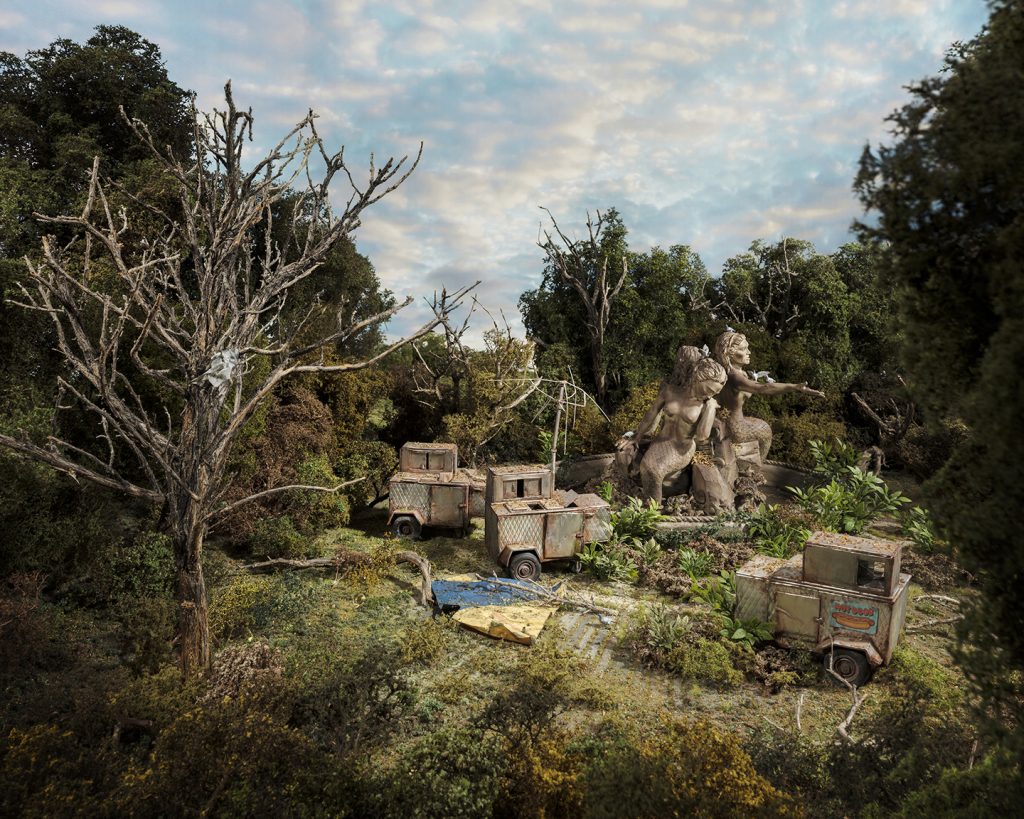
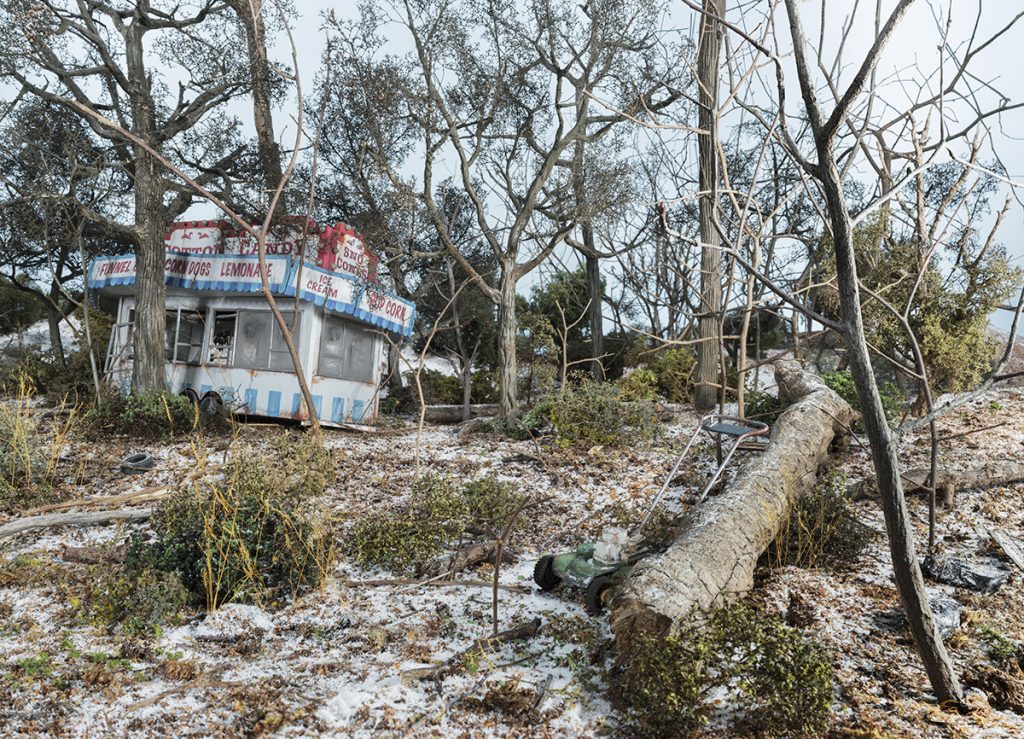
Rachel Reisert, an artist and educator in Cincinnati Ohio, uses historic and digital photographic processes in her works to express a variety of qualities of change and magic. Unfixed #01 and Unfixed #10 use lumen printing, a camera-less process that uses sunshine and moisture to create unique images. “The stitch suggests a desire to control,” says Reisert, but by letting go of control over the image, she allows opportunity for the unintended. “There is a glow and magical quality to the unfixed lumen print,” explains Reisert. See more of her work here.

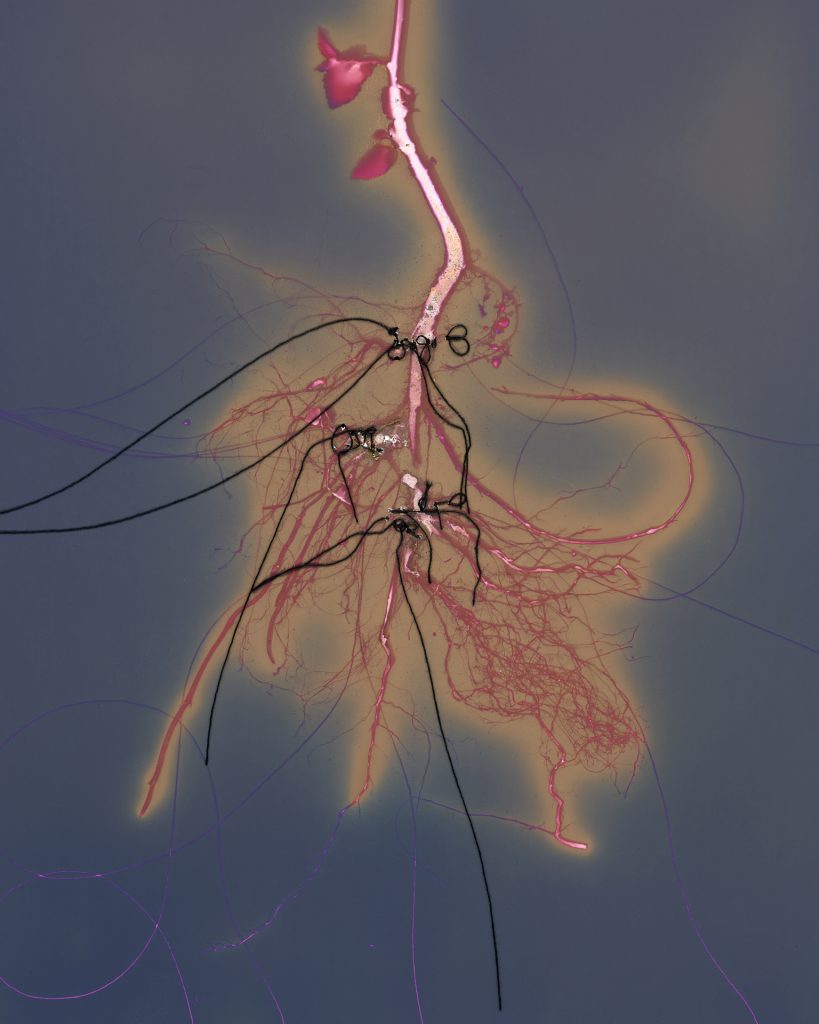
Associate Professor in Photography at Wright State, Benjamin Montague creates Fabrication #23 and Fabrication #21 through photographing projections of still-lives inside a darkroom enlarger. The abstract art is created with a 3D modeling pen and other materials, and the process creates for the viewer an “altered sense of space.” Montague says, “The results are images of objects that feel familiar but that can not be placed in a specific context.” Learn about Montague’s process and other works here.


Diana Duncan Holmes’ works LISTEN and View from 417 take place in Cincinnati. For the former, she uses two prints of the same photograph taken at Washington Park to create visible dimension. The title comes from the subject of the photo, a silvery gold elephant ear leaf. View from 417 comes from a series of many photos from Duncan Holmes’ window over the course of several years. “Always amazed at the variety of life that happens.” says Duncan Holmes, “I am often at just a fortunate glance while walking past a window.” Explore her works here.
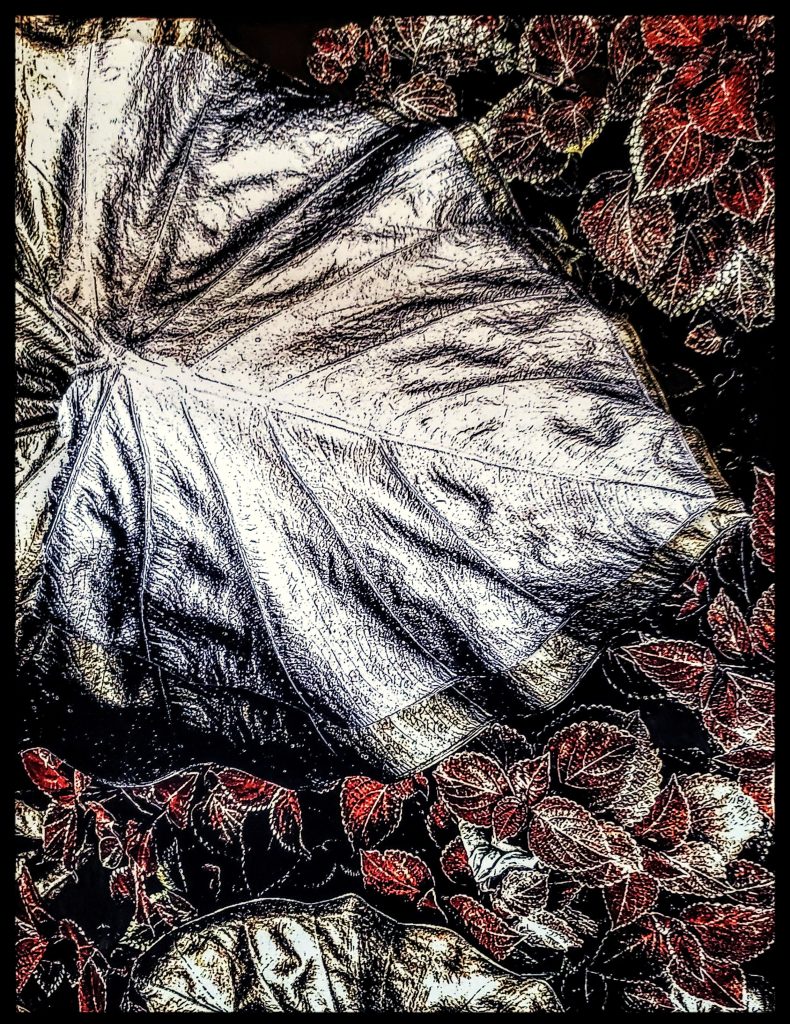
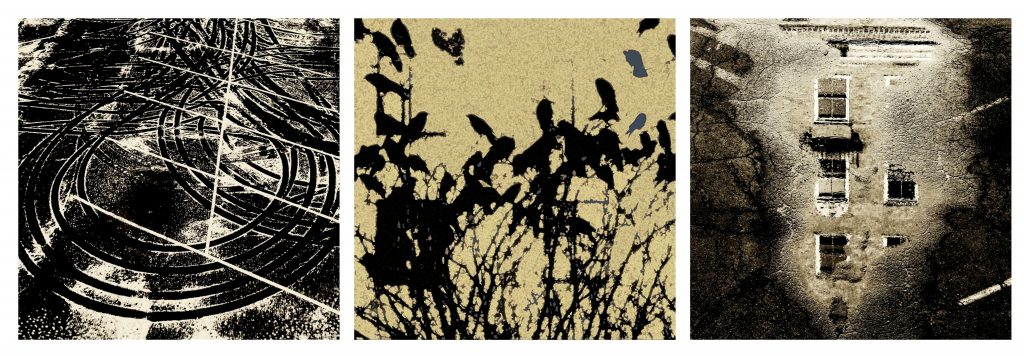
Amy Schuessler, a resident of Columbus and an artist focusing on where writing and photography intersect, brought Untitled, (Me as Stones and Oceans #5) and Untitled, (Me as Stones and Oceans #1) to MUAM’s exhibition this fall. The digital pigment prints are what Schuessler calls “psychological self-portraits.” They depict shorelines after storms, houses and rock foundations, and the water itself. “These images represent the struggle to hold memory, reconcile trauma and the importance of place as a regenerative and creative space to imagine alternative histories,” explains Schuessler. See her work and more here.
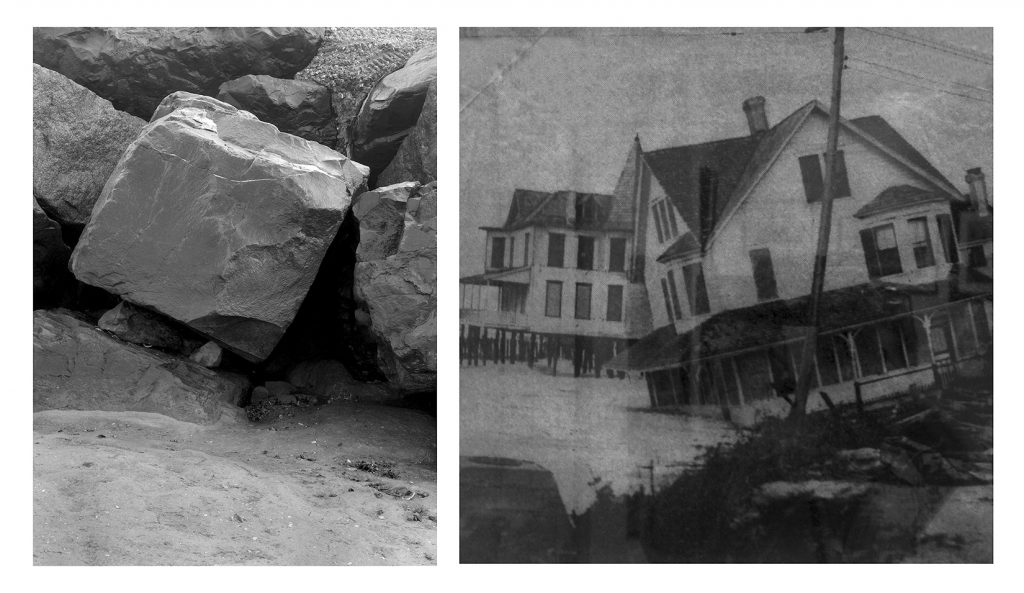
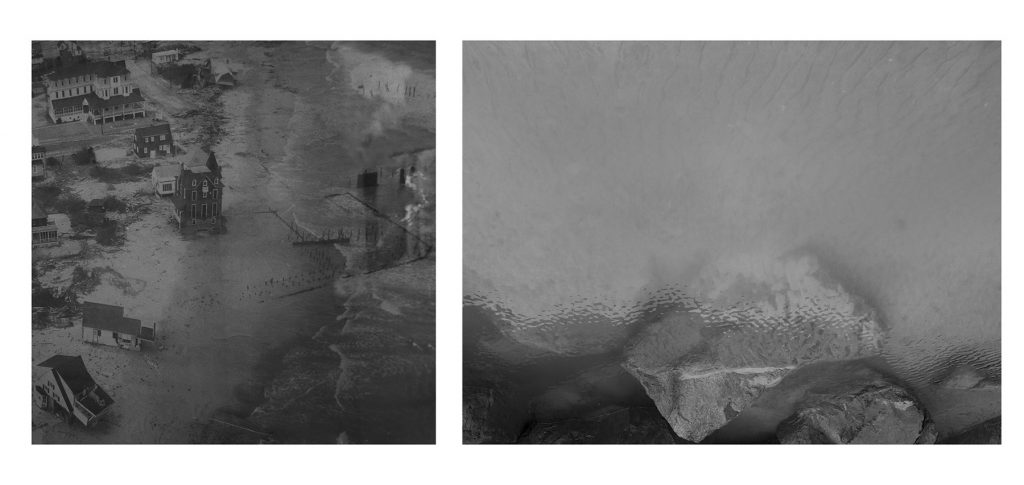
Tracy Longley-Cook, an Associate Professor of Photography at Wright State University, often uses a blend of traditional and experimental techniques to explore transformation, memory, and identity. In Timekeeper and Disturbances, she considers the photographs suspended in time, open to reflection. The solemn and almost reverent actions of the human subject evoke memories of ceremony and symbolic loss. The actions taken were not only inspired by many cultural mourning practices, but also “personal reflections on loss, memory and the passage of time,” says Longley-Cook. Explore her work on Instagram.
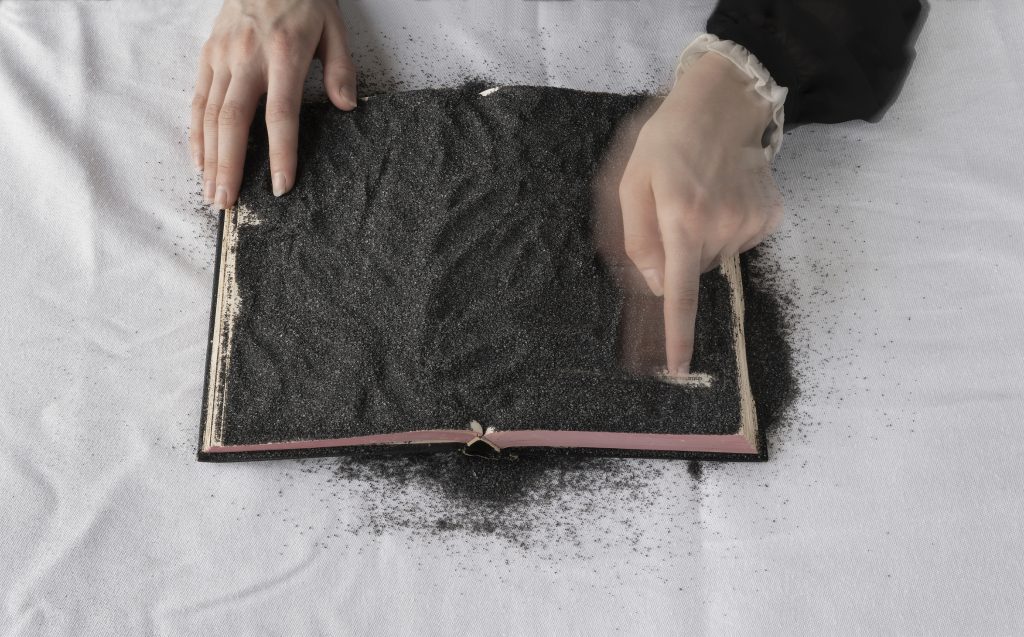
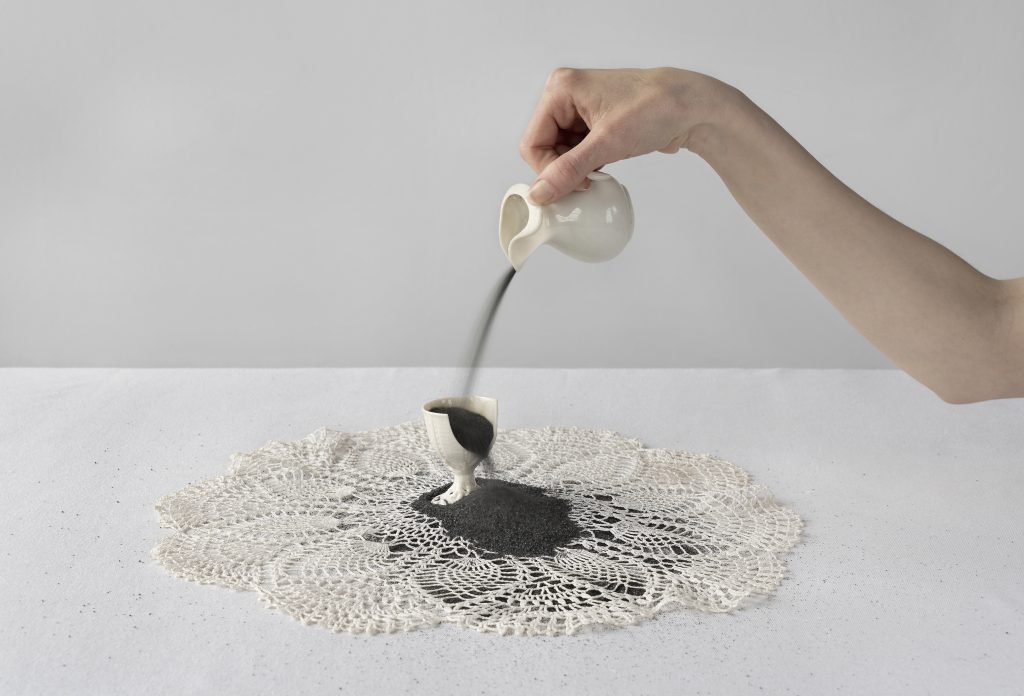
Anita Douthat’s Latticework Series, begun in 2018, uses both digital and camera-less imagery to create art centering on the natural world in small ways. Douthat used an iPhone to photograph flowers in her backyard arranged over printing paper. As the sun changes the paper, it changes color. The title of the series comes from an overhead arbor lattice that casts shadows on the artwork. “This series,” says Douthat, “has become a profound appreciation for the natural world and a necessary solace during a devastating pandemic.”
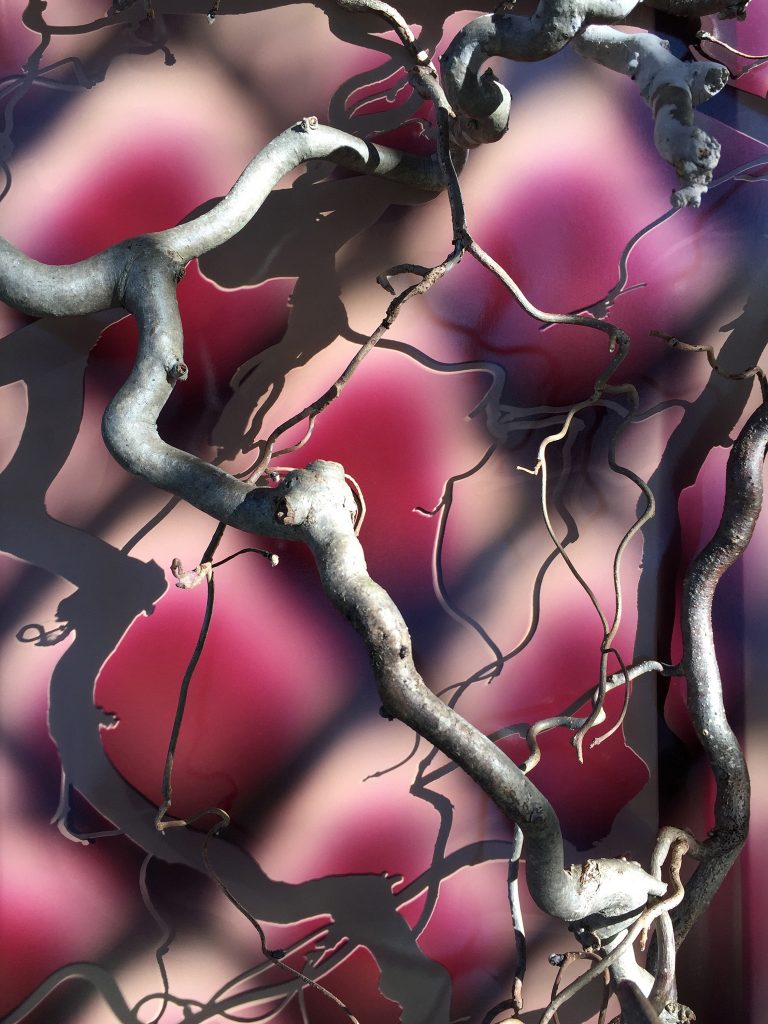
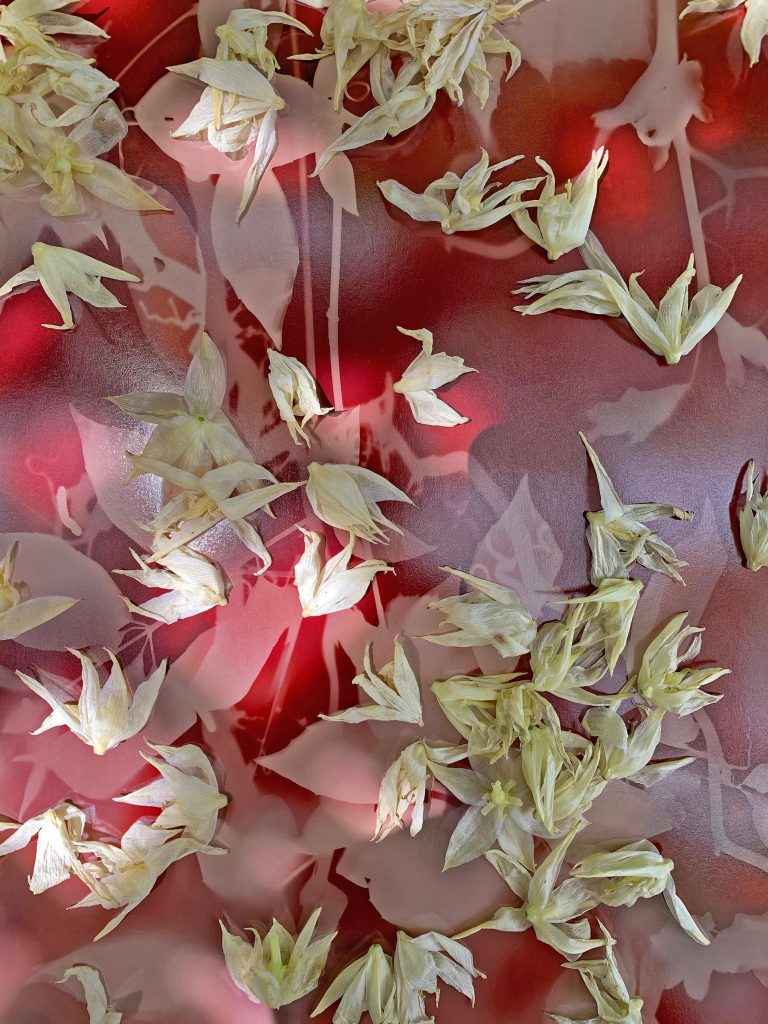
The Miami University Art Museum would like to thank all of our amazing photographers involved in PhotOH: Photographers in the Heartland. We would also like to thank William Messer and Jason E. Shaiman for their curation of the exhibition, and FotoFocus for their support.
